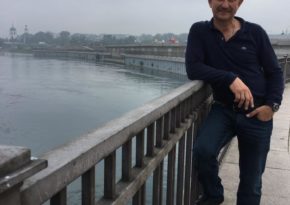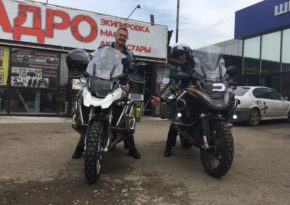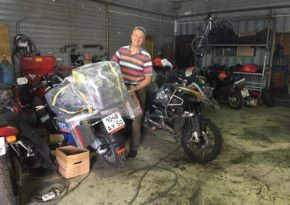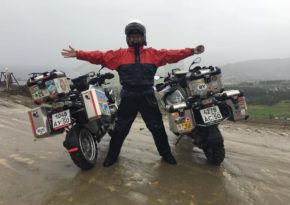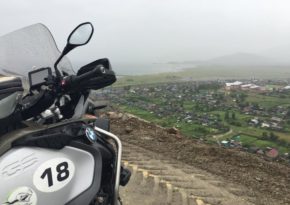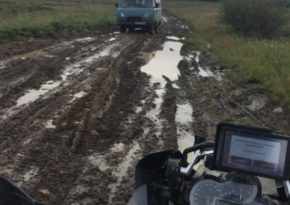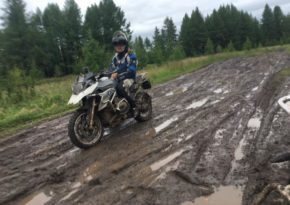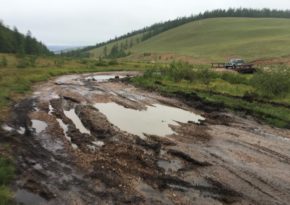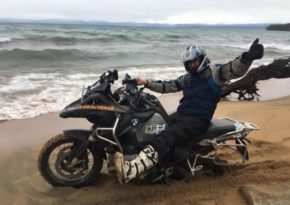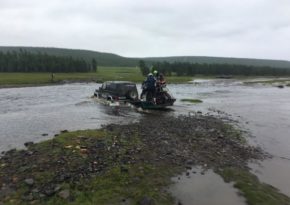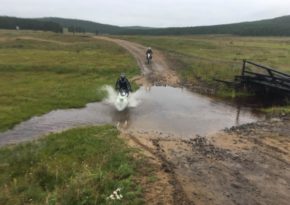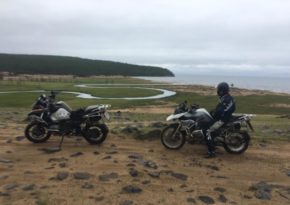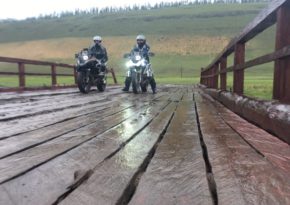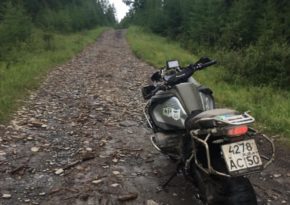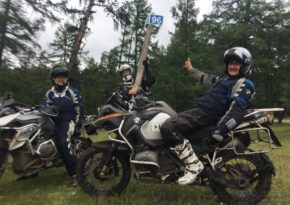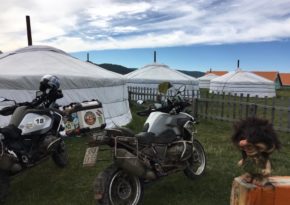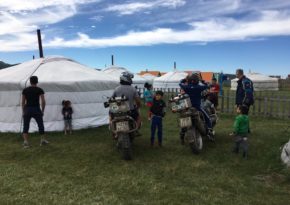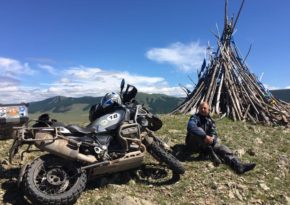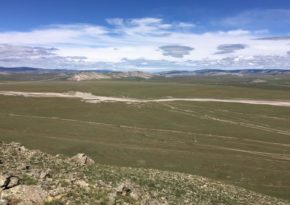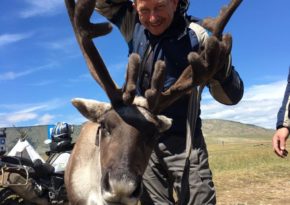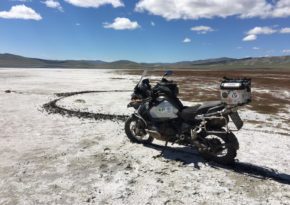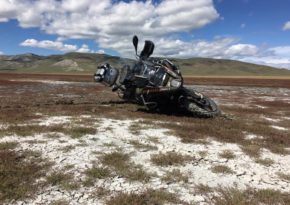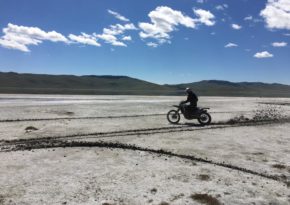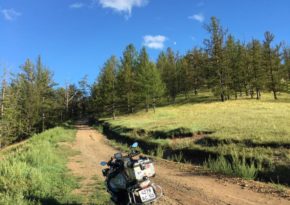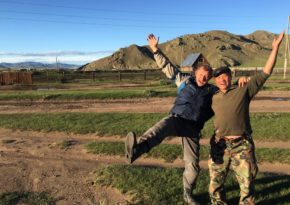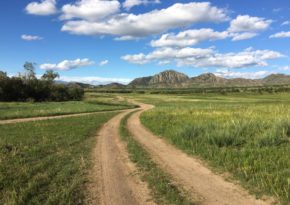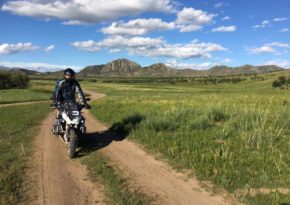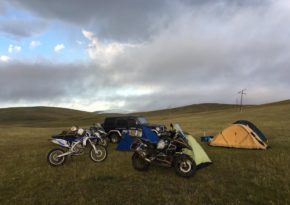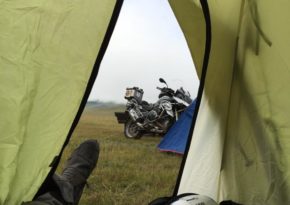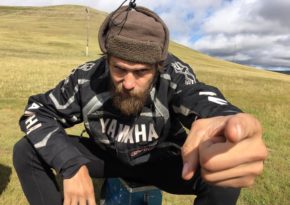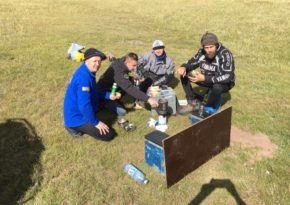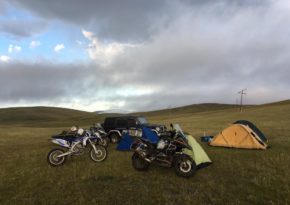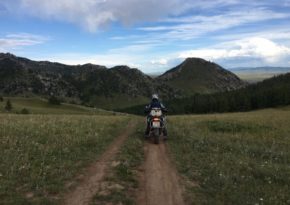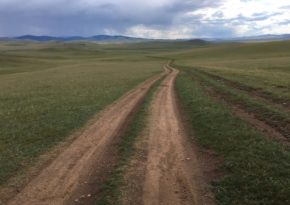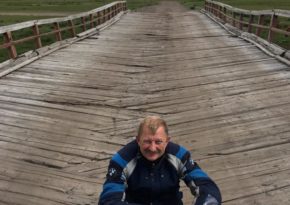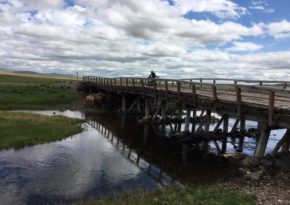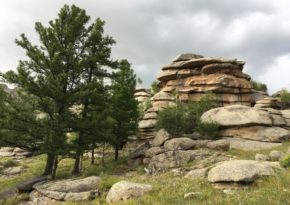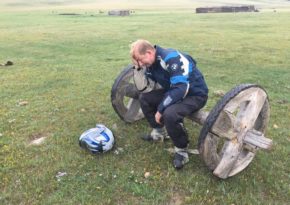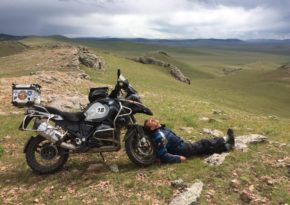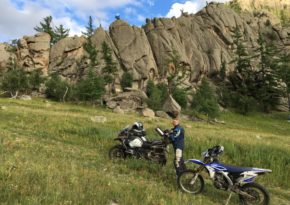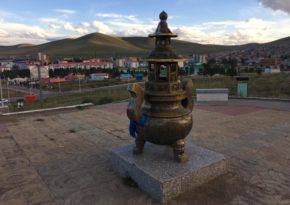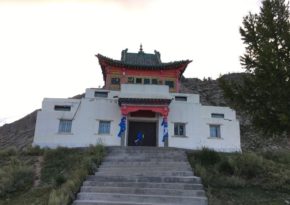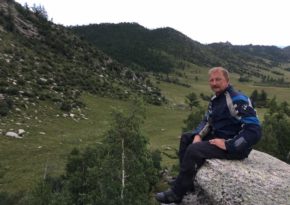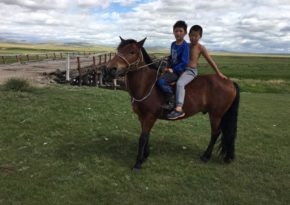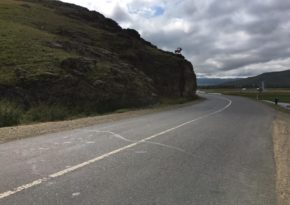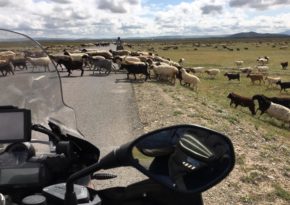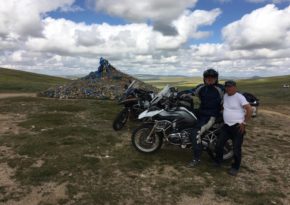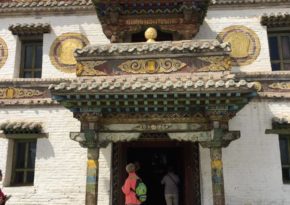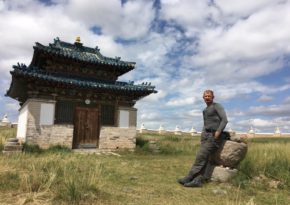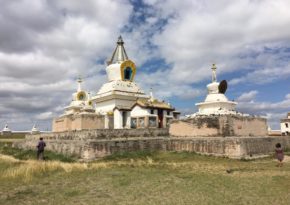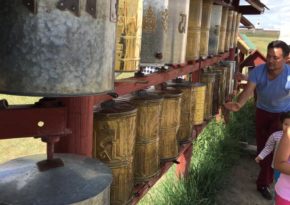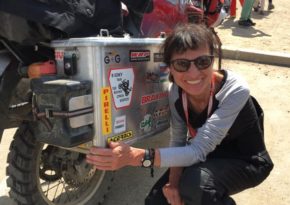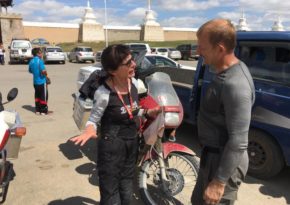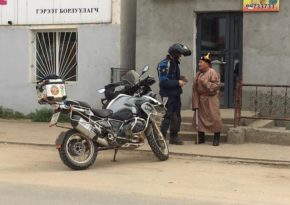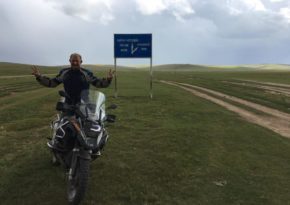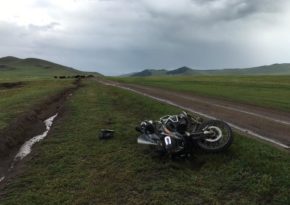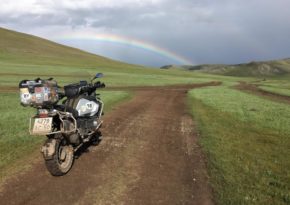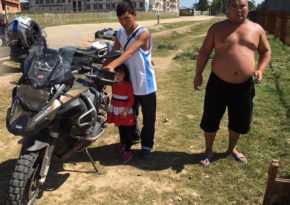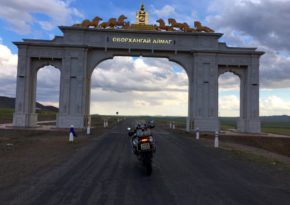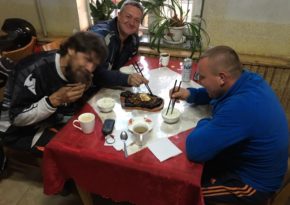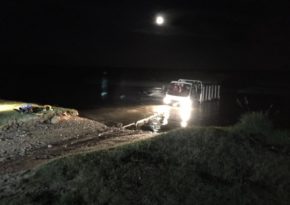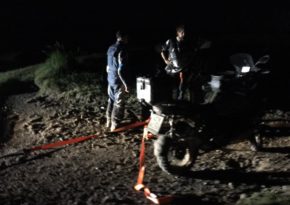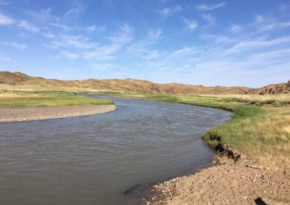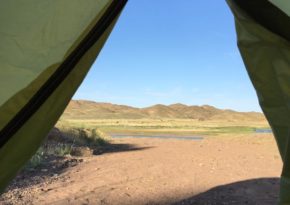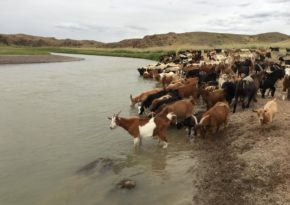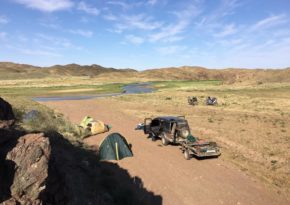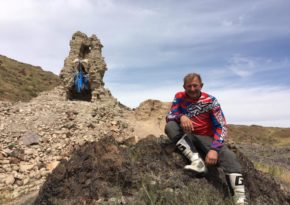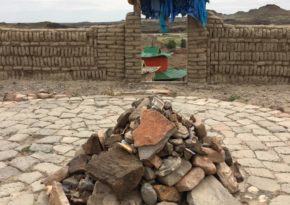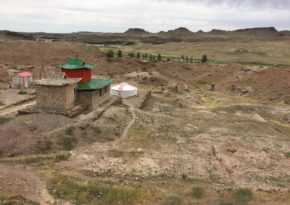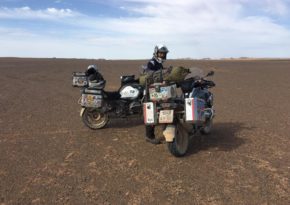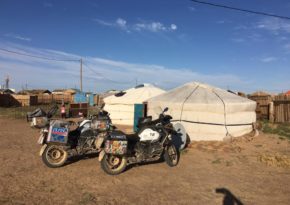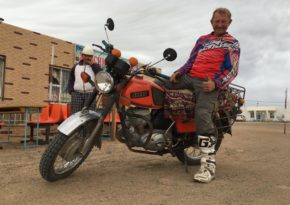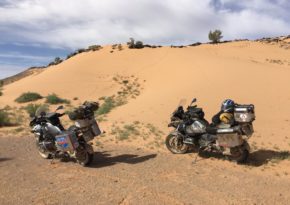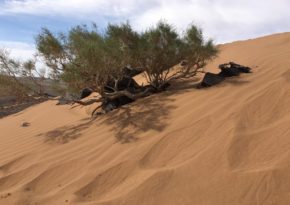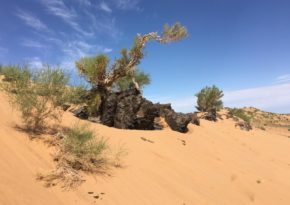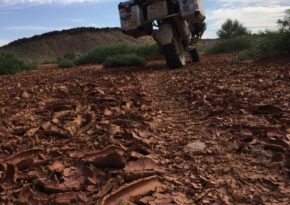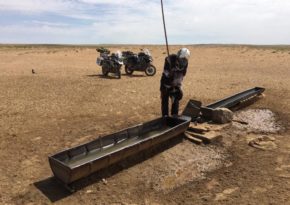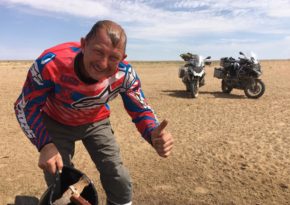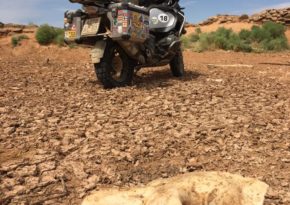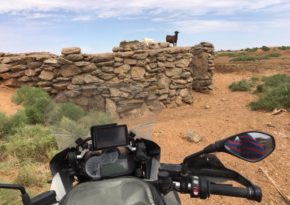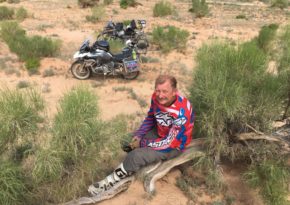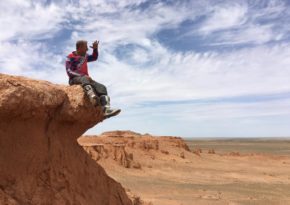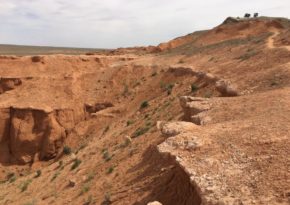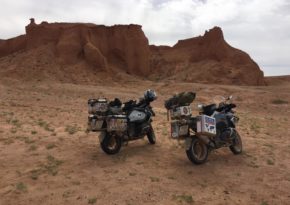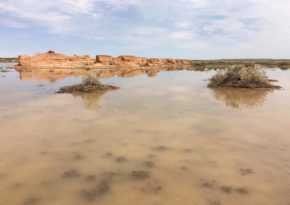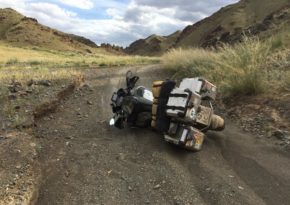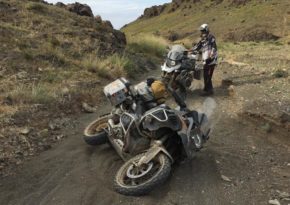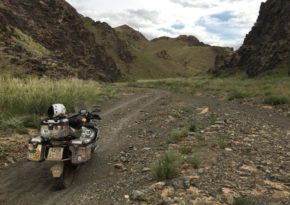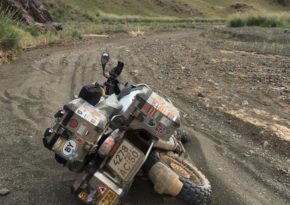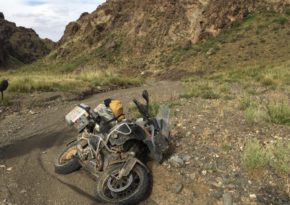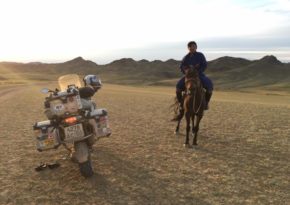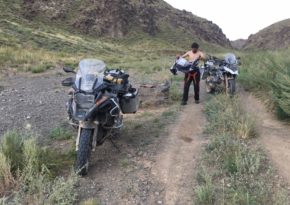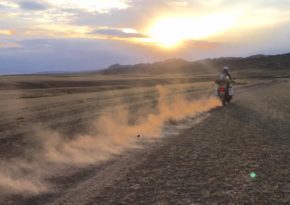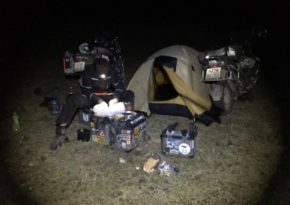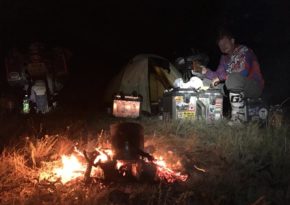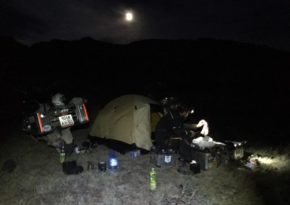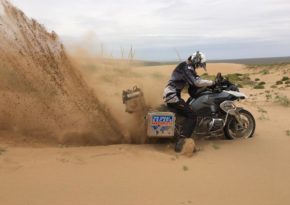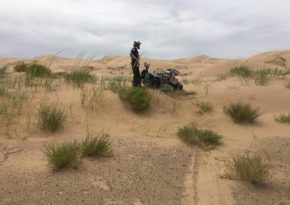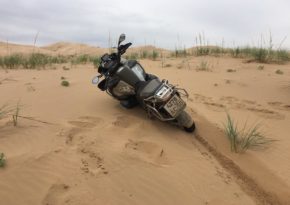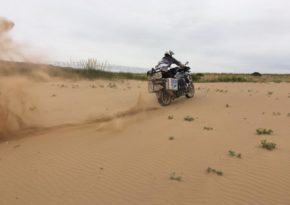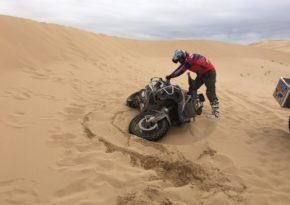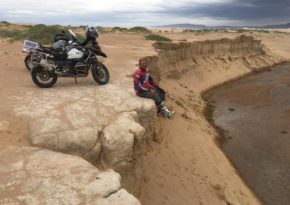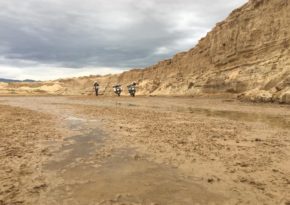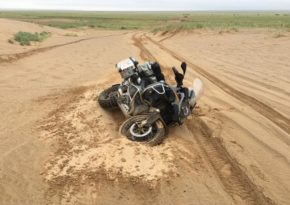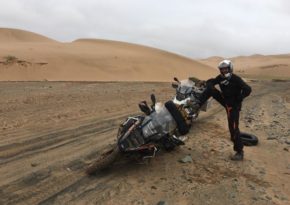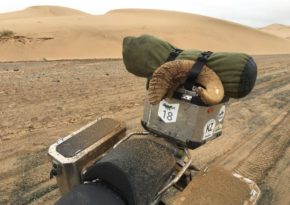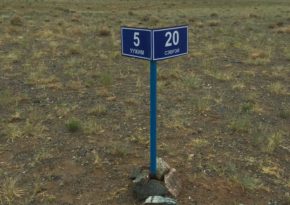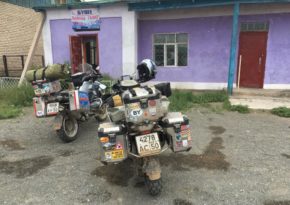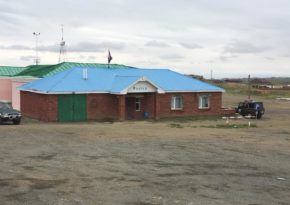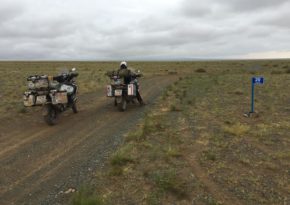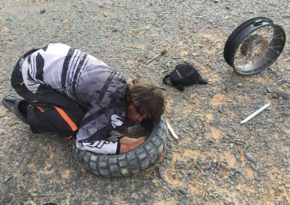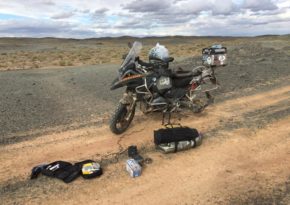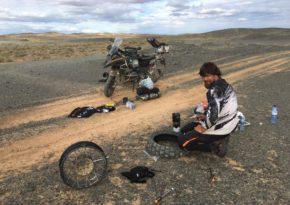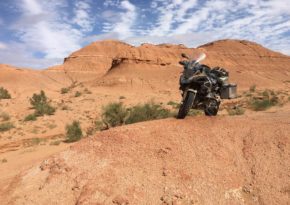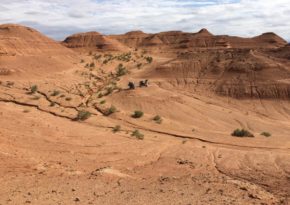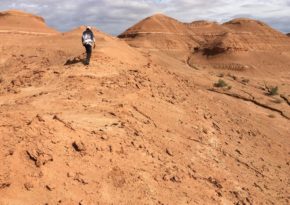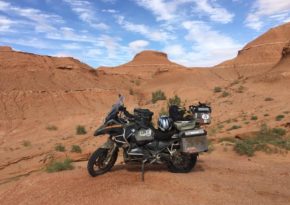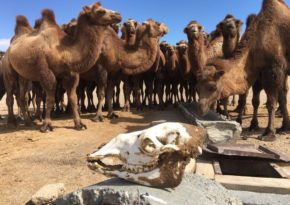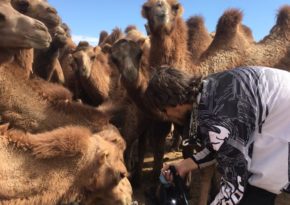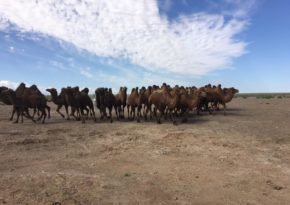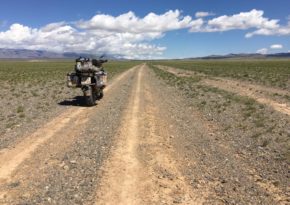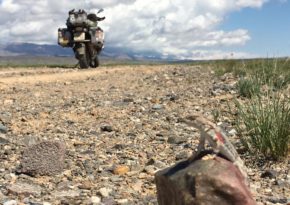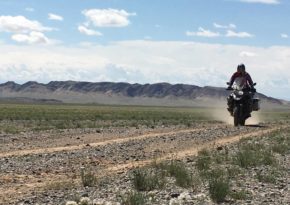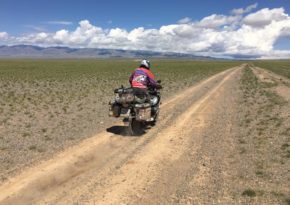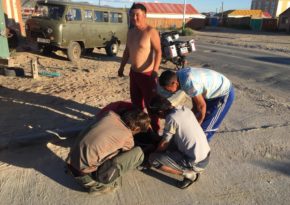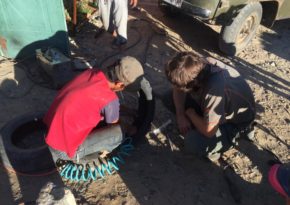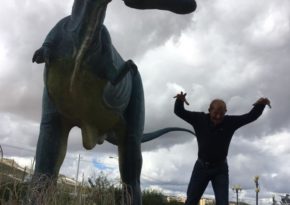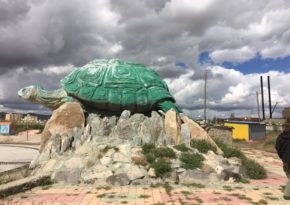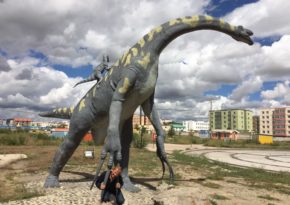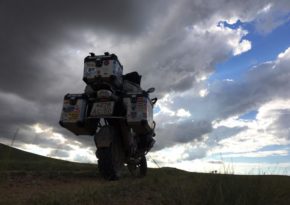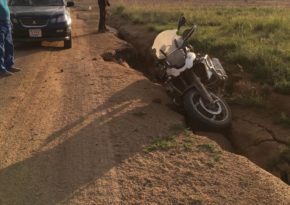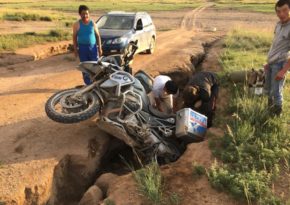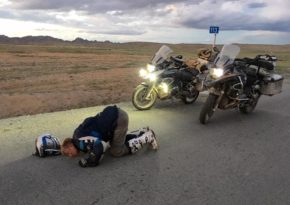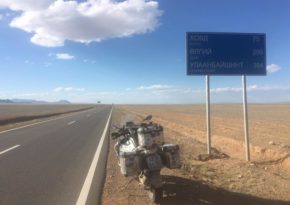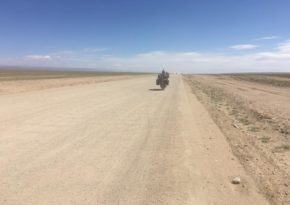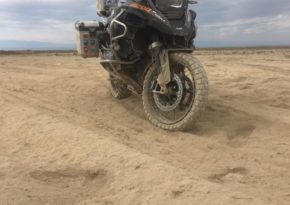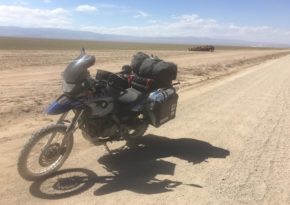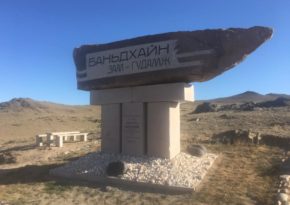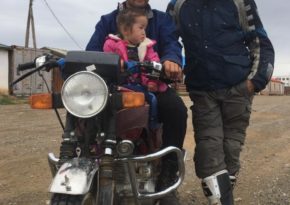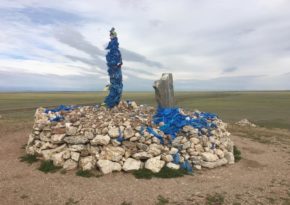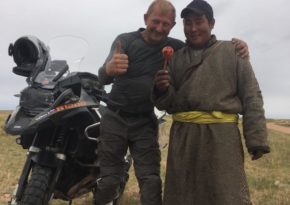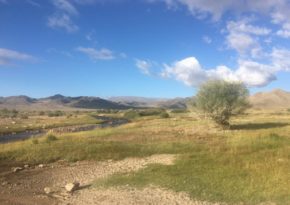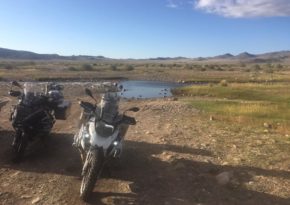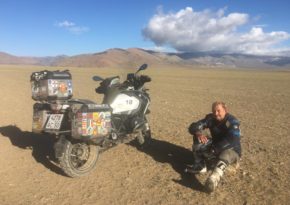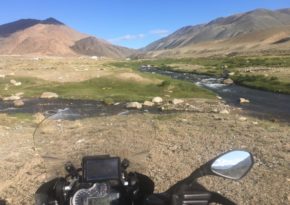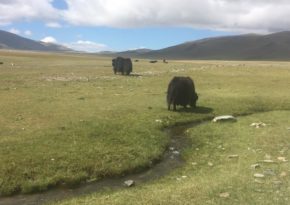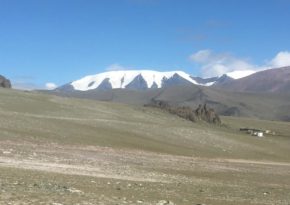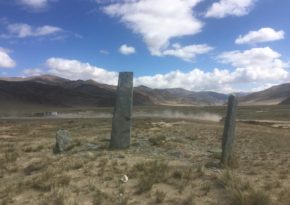A motorbike trip. Siberia → Mongolia → Altai → Kazakhstan → Moscow: Part 1. Mongolia.
The Airbus A-320 was circling over the airport of Irkutsk for forty minutes, waiting for permission to land. Several planes had already been sent to another airfield in Ulan Ude. In the porthole I saw thick fog. Nothing was visible, as if we were steaming in a Russian sauna.

"Well, here the adventures begin!" — I thought, recalling how far the capital of Buryatia is from Irkutsk. But this time we were lucky — the captain finally made a decision and the plane, having touched the ground rigidly, rolled along the concrete landing strip, gradually braking with roaring engines. We have one day to acclimatize, get acquainted with the city and get ready with our motorbikes, which had been delivered here five days before by a transport company.
Tomorrow morning we are heading for Lake Baikal and then will proceed further to Mondy, where we will cross the border and get to Mongolia. It promises to be a very interesting part of our journey!
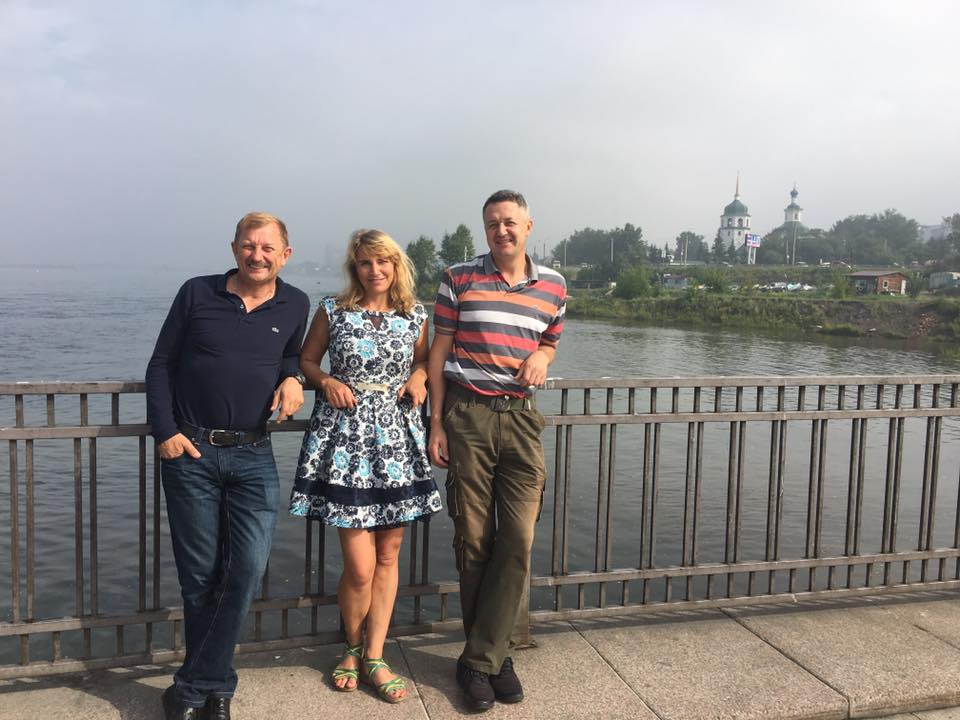
Now we have reached Lake Baikal! The weather is superb! It has been raining cats and dogs for two days, the temperature has dropped below -10°C and strong wind is still blowing… And this is just the beginning!
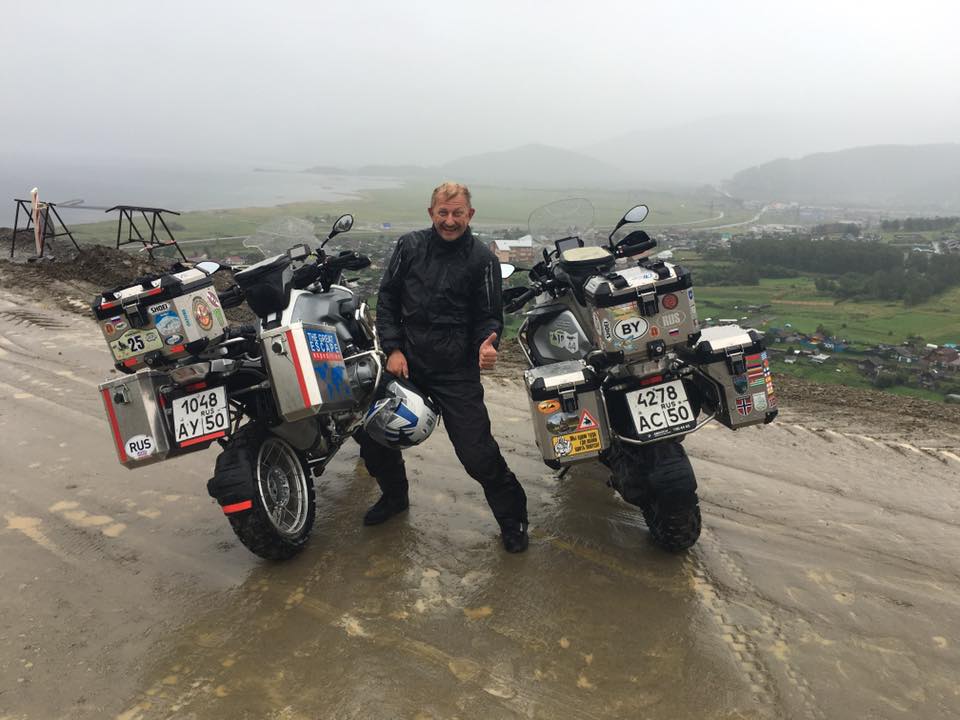
We are heading for the Gobi!
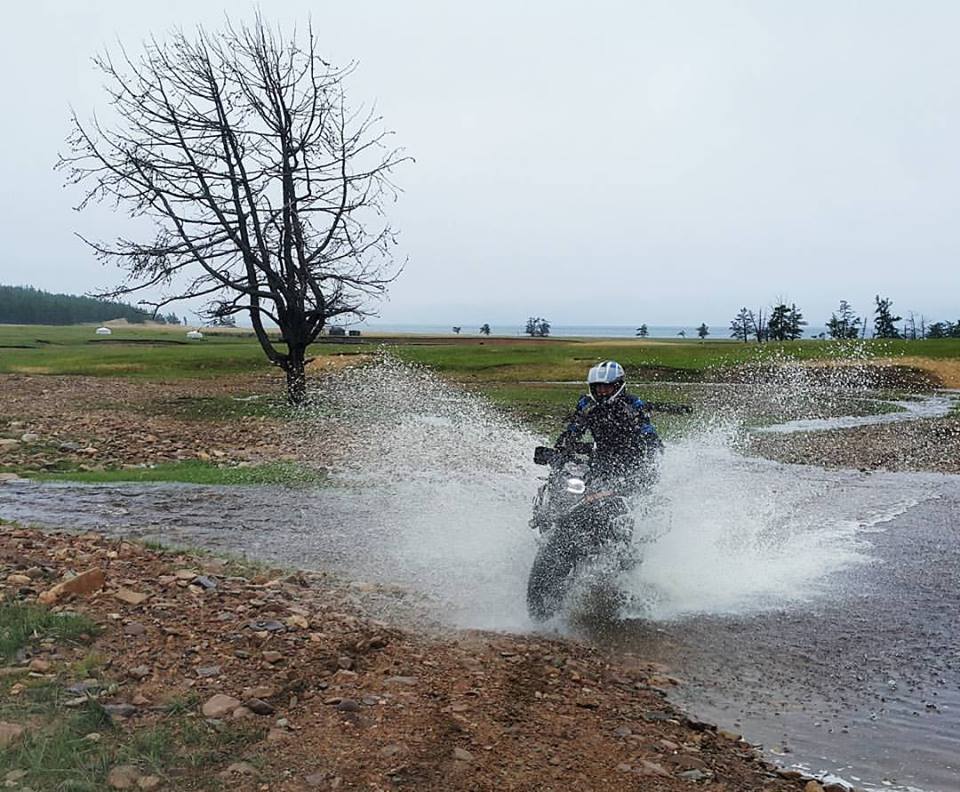
The Khatgan—Hang Federal highway, which is paved along the western shore of Lake Khubsuguul, turned into a real hell after non-stop raining days!

Small streams have become stormy rivers, which could be crossed over only by well-equipped off-road vehicles (definitely not by motorbikes!) But in this situation there is only one way to say so, and we had no other options left.
We were a bit encouraged only by the fact that we had a Toyota Land Cruiser with a trailer as a technical support and the best guide around Mongolia on a light WR 450 motorbike, whose not name was Dima Yaskin.
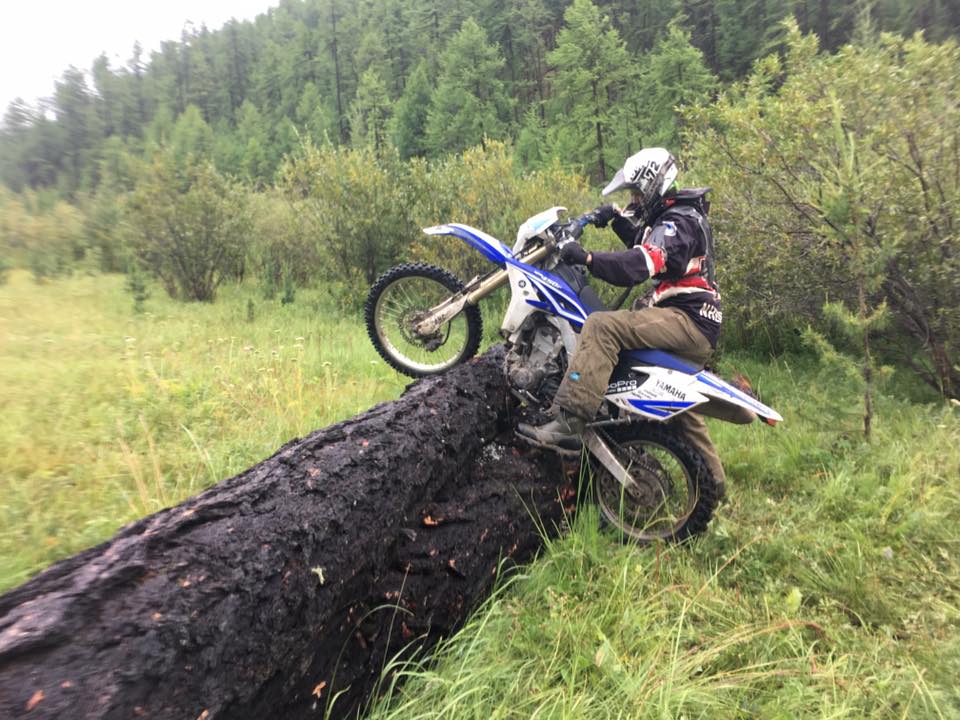
We left Khatgan at 11 o'clock. It was cloudy, but rain hadn't started yet. A ground road winded along the hilly shores of Khubsuguul, branching off and occasionally running into the mountains and descending to the very edge of water. We could see the mountains, the tops of which were covered with clouds, on the opposite shore of the lake. That was such an incredible beauty!

An hour later we came to a rushing river. There used to be a ford, but now it's just a stream. Having measured its depth with the help of a car, which went under the water up to the headlights, we decided to transport motorbikes on a trailer.

The current was so strong that even a heavy jeep was being turned around. It took us 40 minutes to cross the river, and half an hour later it blocked our way again, so we loaded the motorbikes into the trailer one more time and overcame it one by one. All the bottom was covered with big stones and there was a moment when the trailer wheel hit a huge boulder, so the motorbike was near to fall on its side… Oleg, trying to hold it, slipped into the water… At least, this time the motorbike was not drowned. However, Oleg was less lucky!
While we were busy with crossing the river, a strange-looking Mongol in a raincoat (with the inscription “Police” in English) on a Chinese motorbike appeared out of nowhere. He held still for a long time, watching us, but on our proposal to ferry him to the other shore he answered “no”.

Soon the tedious rain started again and the road turned into a muddy mess, motorbikes were struggling with the ruts, turning right and left. It was pouring so intensively that we could hardly continue our way across fords, swamps, rocks... And there were still more than a hundred kilometers of a real sh… shock ahead…!
We arrived in Hang late at night. There we found a camping site and negotiated with the hostess on staying overnight in a yurt with stoves. I put my last effort to take off my wet, dirty clothes and fall asleep. It was an incredibly hard and crazy day!
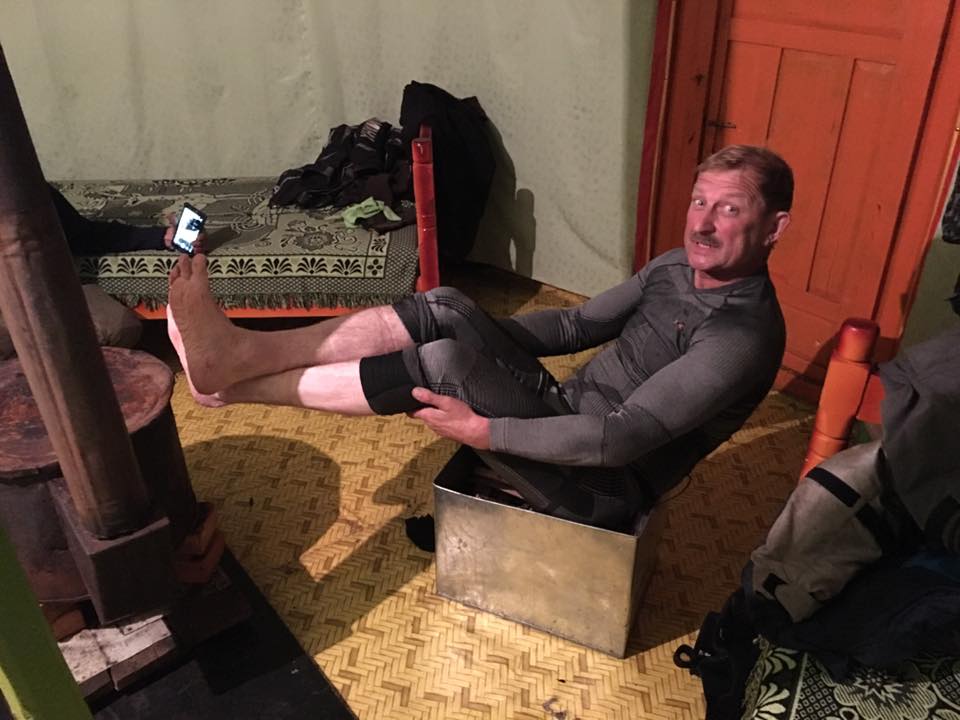
Hang is a small town situated on the southern shore of Lake Hubsuguul. This is the only street along which you can see single-storey buildings, houses and yurts. There are also many small campsites, which offer overnight accommodation in a yurt for 4-5 people for 40,000 tugriks (about 1300 roubles) per day.
As for the amenities, there is a wooden toilet outdoors and a barrel nearby, which you can take water from. In the town there are cafés, where you can have a delicious meal. A two-course lunch with Mongolian tea will cost you about 3000 roubles. The portions are big and mostly contain meat. At the petrol stations the 92nd gasoline costs 60 roubles per liter.
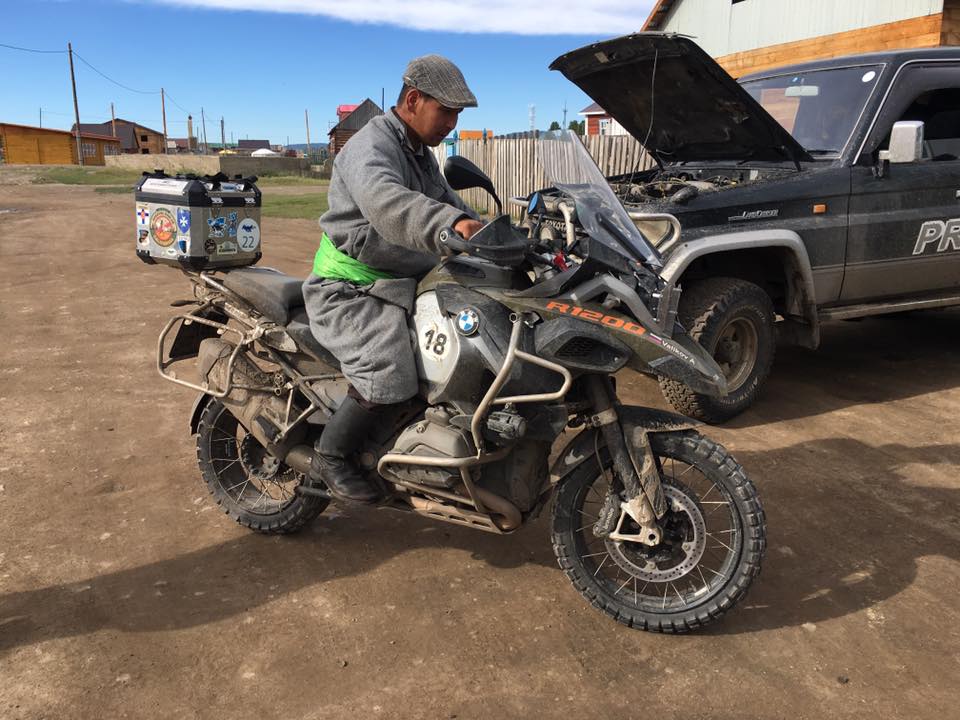
The following morning we woke up late and the guys went to look for a kind of car service to fix the Toyota's tow bar, which had been torn off yesterday. While we were getting ready, putting ourselves and equipment in order, it came up the time for lunch. We left Hang at 1 p.m. And the day turned out to be just gorgeous!
Although in the morning there was frost on the grass, by noon the air had warmed up to +20°C. The sun was shining brightly in the blue sky with rare light clouds and we were following a beautiful paved highway. Everything was not like yesterday!

Next stop on our way is going to be Moron, a town that is located 100 km east from Hang. But before this we turned off the highway and rode along a few field roads. There we spotted a gorgeous place — a small salt lake! Fantastic!
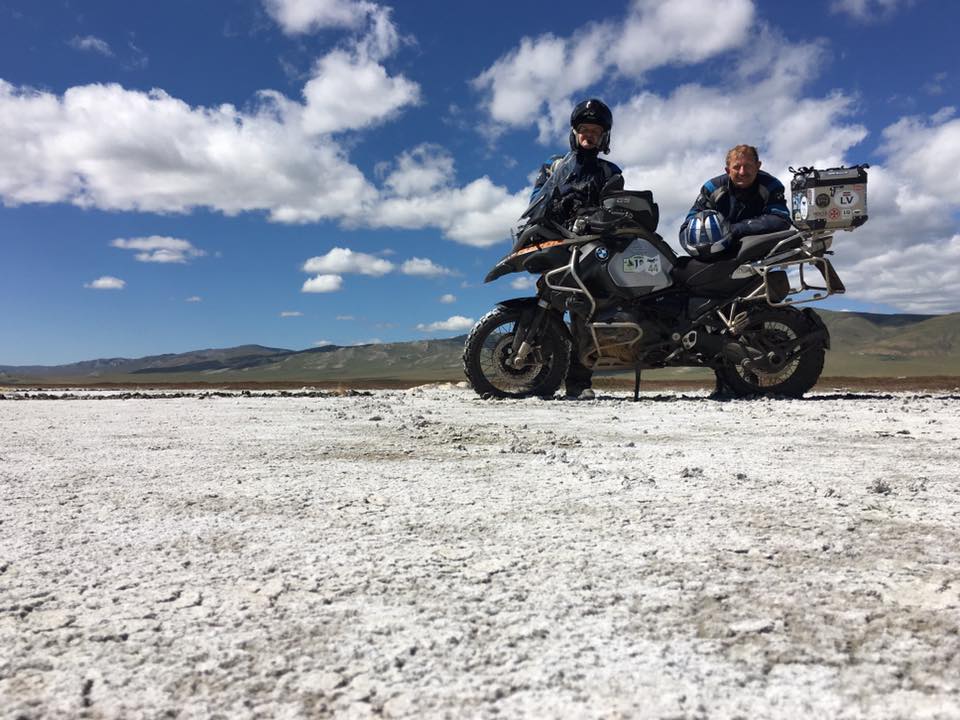
The surface of the lake, as clear as a mirror, was surrounded by a white salt marsh and bright red vegetation that looked like a soft carpet. Here we had real fun! We were racing, making circles on the flat surface of the salt marsh and spraying dirt and salt from under the rear wheels of our motorbikes for several meters all around. In Moron we found a car wash, where smiling Mongol women washed our motorbikes with soap foam for just 200 roubles. After yesterday our vehicles looked like one big lump of dirt.

After having a snack in a lovely and decent café with WiFi (where everyone immediately buried themselves in their smartphones) we continued our way. We passed another 50 km along an asphalt road and then went to the mountains. There we followed the ground paths, which were so excellent that we could go at a speed of 90 km/h without any difficulty, looming between gentle mountain ranges.

The beauty around was incredible! We often noticed free-standing yurts and huge herds of sheep, goats, cows and horses. Several times we climbed the steep rocky slopes up to the peaks, which took us much effort, but the amazing views of the valleys and mountain lakes were worth it! Great!
The sun disappeared behind the mountains and the communication link disappeared together with it. Our multiple attempts to make contact eventually succeeded, but all in all it didn't help. Our mates lost their way somewhere in the boundless Mongolian steppes... For more than three hours we were searching for them, while the link kept appearing and disappearing. Only the moon and stars were seen in the black sky, which seemed to say that we all looked like stupid saigas rushing back and forth across the night steppe in search of a lost car with all our stuff, food and tents…
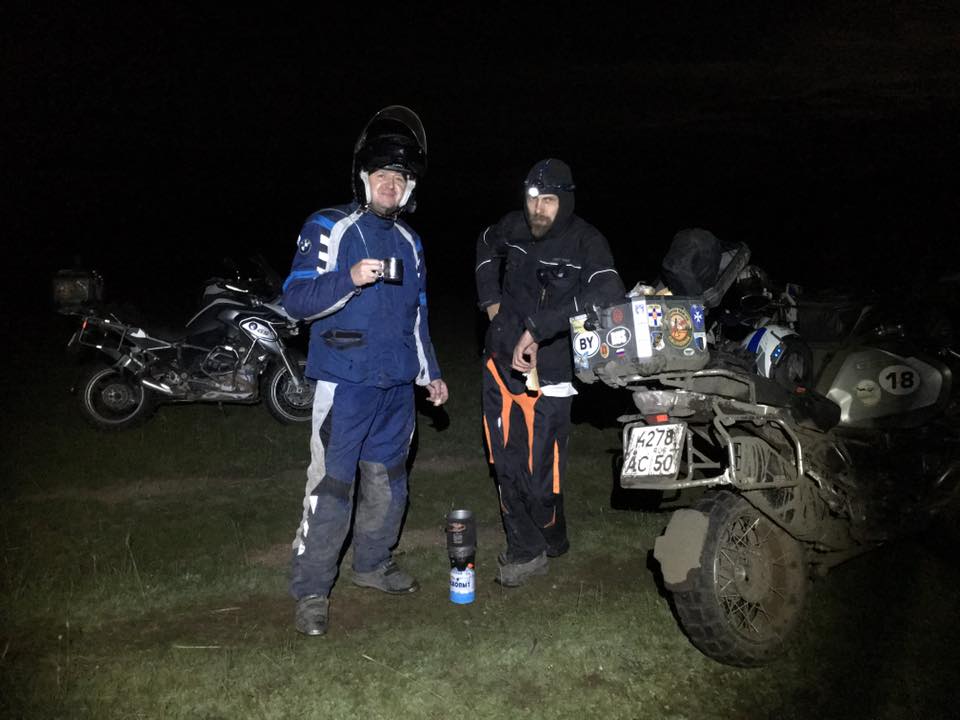
By 1 a.m. we had finally met and immediately set up tents right in the steppe, heated some tea on a gas burner, drank up 100 grammes of whiskey and fell asleep. Another day of our adventures around Mongolia is over!
Mongolia. Day 4.
Morning. We crawl out of our tents, looking around, because last night we had little idea of where we set up our camp. Now we are in the middle of a field surrounded by the hills, not far from the road leading to the village, along which a lonely Mongol is riding slowly on his horse.
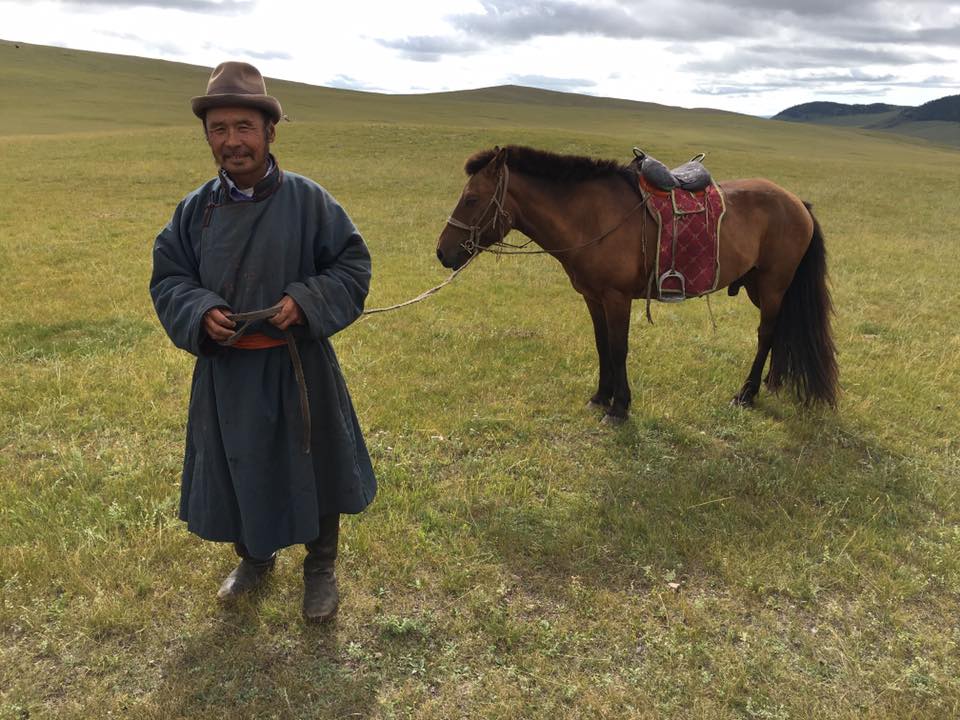
A couple of minutes later he drives up, greets us, gets to the ground and stands motionless for a long time, looking at us, strange people and their iron horses. By and large, the Mongols must have got such a national peculiarity: as soon as one makes a stop for more than 10 minutes long (no matter where — in the steppe, in the desert, in the mountains), a Mongol on a Chinese motorbike or horse is sure to come soon.
Moreover, it would be quite unexpected and unclear where he came from. He would say hello, probably ask something in their strange language and then just hold still and watch you for a long time.... No one is in a hurry in Mongolia…
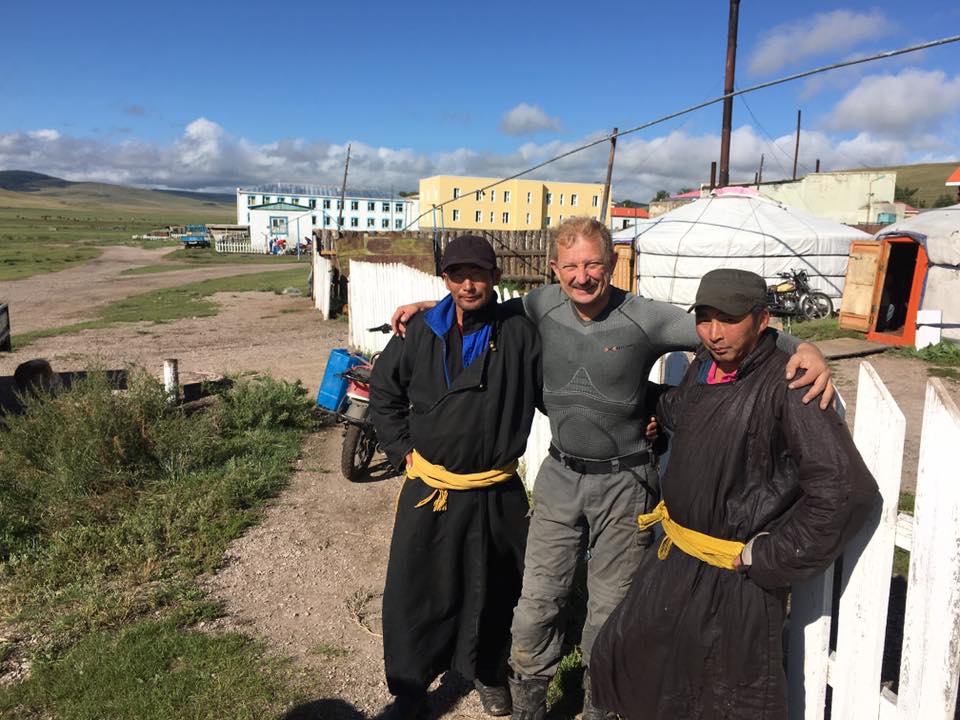
Today we have to get to Tsertserlag, a town that is located in the centre of Mongolia. We keep going along the ground roads, facing and frightening huge eagles, which are the size of a motorbike, while they are having lunch on the corpses of dead animals.
The road starts winding between the rocks. We climb one of them and the small stones fly from under our wheels like bullets. But what a gorgeous view its top offers!
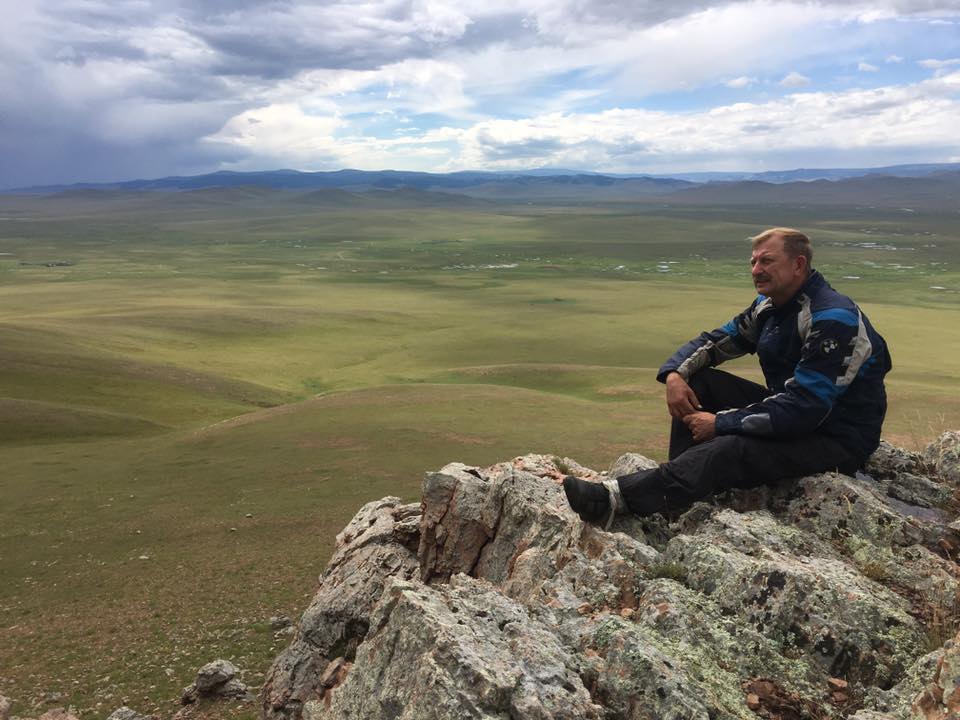
Five kilometers away from Tsertserlag we take a turn to an unusual gorge. The huge boulders look like they have been put together into some intricate pyramids by a huge giant. Around us there are tall pines and high grass up to our waists. This is Mongolia as well!
In the town itself you can visit a beautiful Buddhist temple with a statue of Buddha in it.

Mongolia. Day 5
In the morning we leave Tsertserlag for Khorkhorin. While going there, we see a large pile of stones with blue ribbons by the road. This is the place that is very revered by shamans. It is called Obo, as far as I remember.
Here one has to stop, ask the spirits for help and leave something for them (at least, throw one more stone into this pile). While we were looking for stones, one Mongol drove up, greeted us and suggested drinking vodka with him, since this was also a tradition: one has to drink here and share the drink with the spirits too.
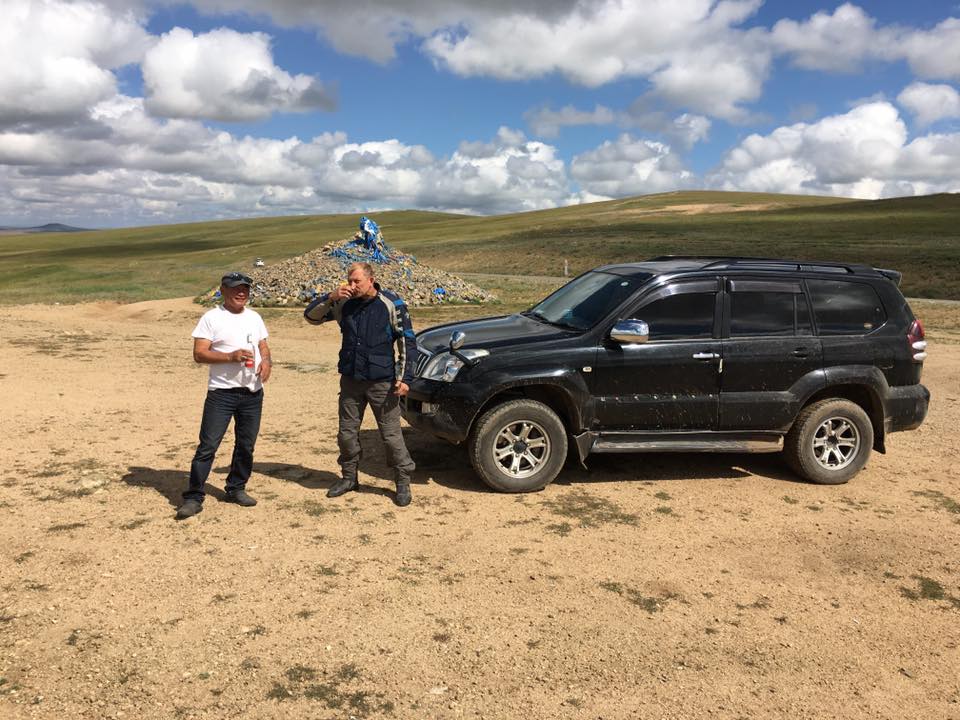
I agreed. Oleg refused. And it turned out that he made the wrong decision: the spirits could have been offended! And this is not a joke, unfortunately…
An asphalt road, all in holes and pits, leads us to the southeast. Having overcome 140 km, we reached the ancient capital of Mongolia. This unremarkable small settlement is famous for a well-preserved historic fortress and a functioning Buddhist monastery.
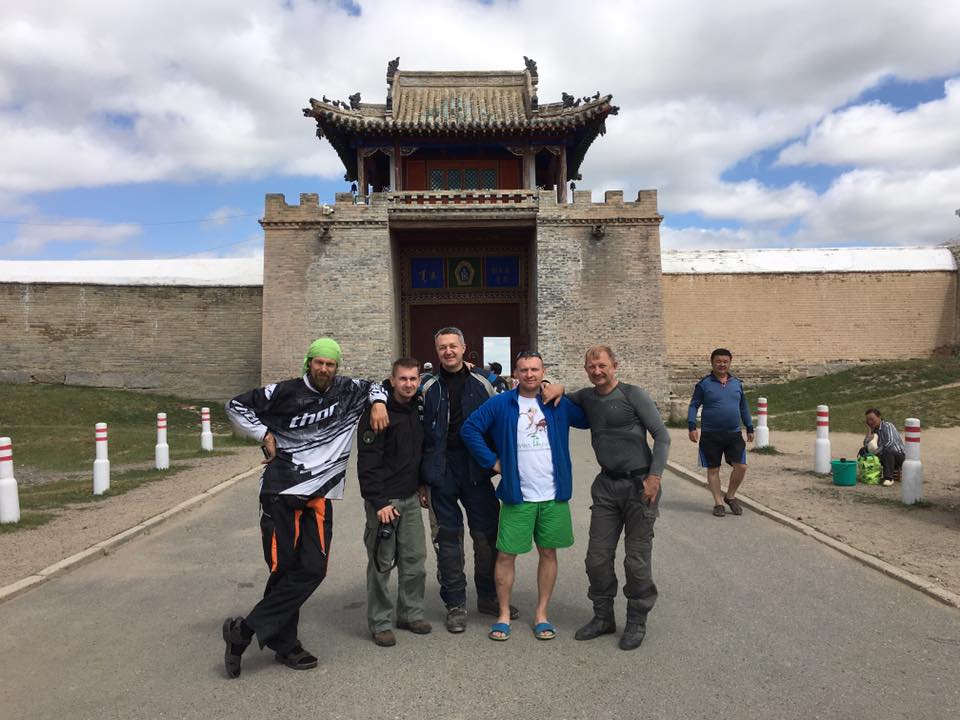
It's a beautiful place and you can see real monks here! What's more, on our way we met an interesting couple: a guy and a girl from France, who were traveling by hitchhiking. They had already walked all over Russia up to Vladivostok, then gone across Southeast Asia, now they are crossing Mongolia and soon are going to China. They started their trip last November. Such positive guys! We offered them a seat on a motorbike mounted as a trailer and took them with us…

We have also got acquainted with Italian motorbike travelers. This married couple had driven across the whole Russia and Kazakhstan to Mongolia. In general, Khorkhorin turned out to be one of the most visited places by tourists and it is really worth visiting here.
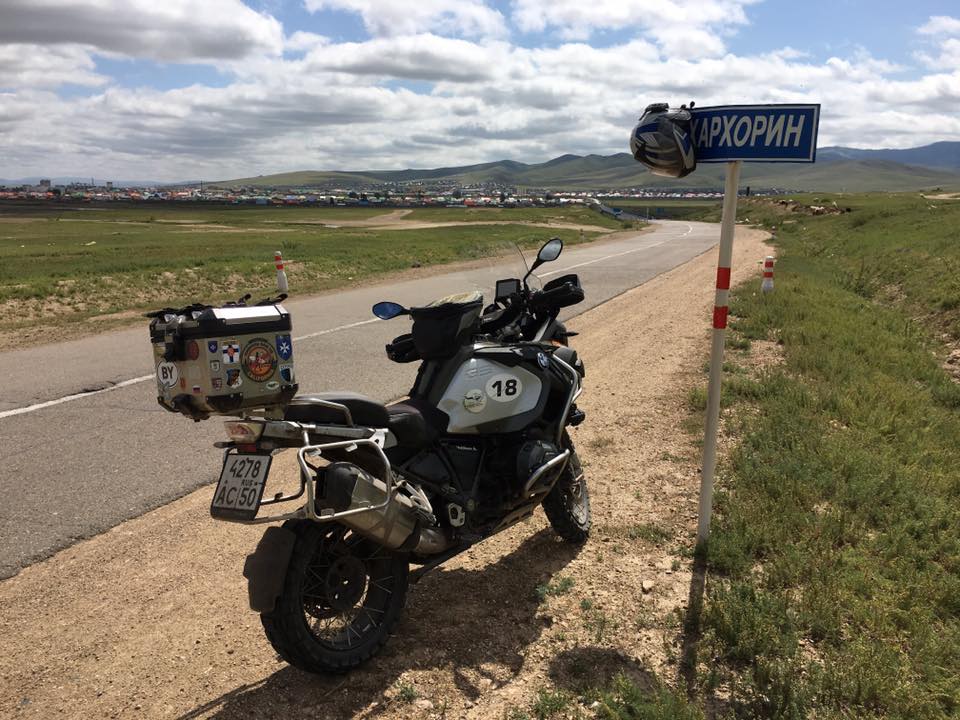
After Khorkhorin we went to the steppes, so the ground changed and there was a lot of thick dust. Suddenly it began to rain heavily and the road turned into a frying pan greased with lard. Anyway, I have noticed it quite late. I was going at a speed of 70 km/h, when the front wheel slid off the edge, the rear one went forward and the motorbike turned around and made a highside. My “iron horse” tumbled for a 20 m distance and I flew even further.
This time I was lucky, since I had only a bruise on my shoulder and on my right forearm. And my motorbikey turned out to be a resilient one. That moment it was covered with grass and dirt, but as for damages, it got only the broken protection of the handle and the torn fastening of the bag on the tank. Half an hour later, Oleg punctured his wheel, which is actually quite a regular situation.
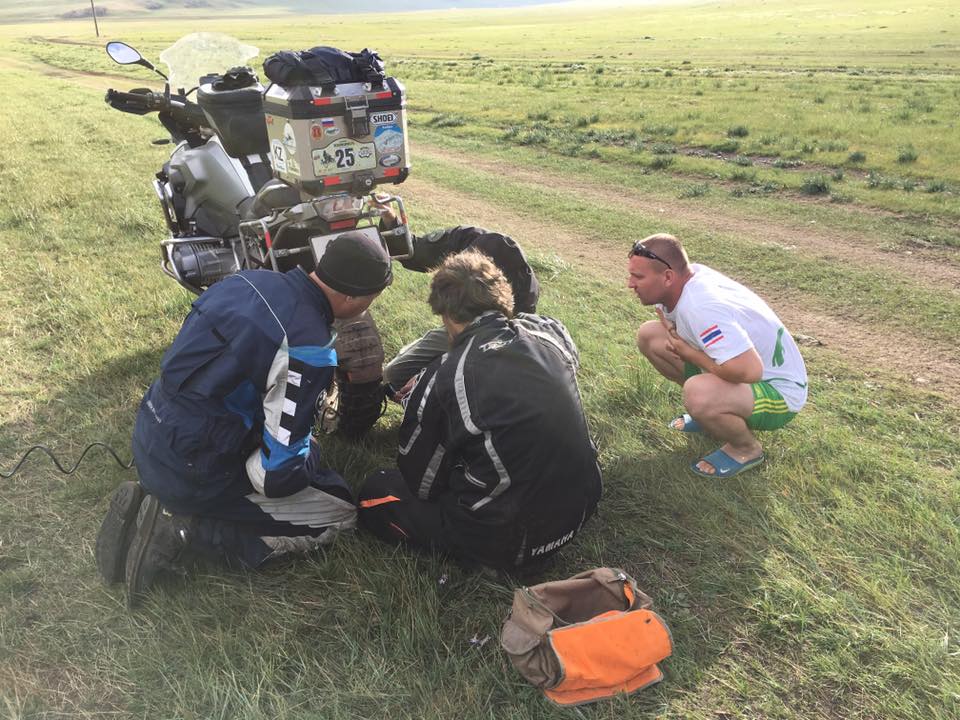
We had got to Arvarhair by 8 p.m., but this is not the final destination of our today's run. However, I realized that there's no point in planning anything in Mongolia. We just have to follow the stream of life and never say: "I'll be there then, at that time!” It will never be that way!
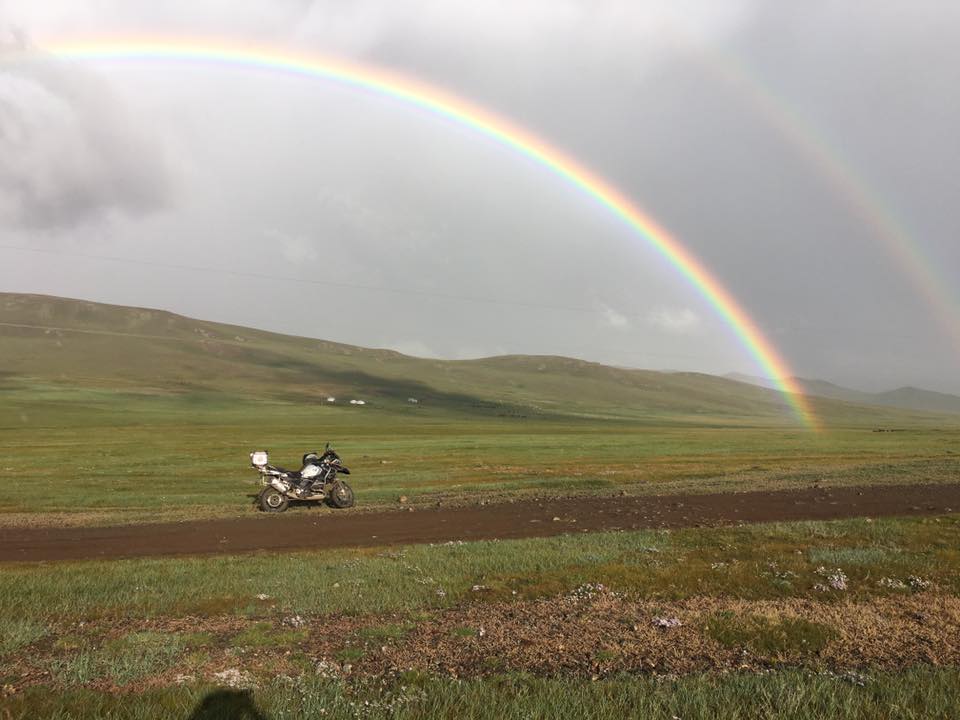
Here the flow of time and other laws of life differ, which, at first sight, is quite a strange thing for us, but... the Mongols live this way and, seeing their friendly smiling faces, you will surely believe that they are happy!
Now it's 10 p.m. The sun has already disappeared behind the mountains, and we have not left Arvarhair yet. Having some rest in a café, refueling our motorbikes and doing some other stuff, we didn't notice that the night came. There are still 155 km left up to the planned final destination of today's journey. But it's not just a 155 km distance along the asphalt road, it's a 155 km distance across the Gobi Desert at nighttime, which starts from here. We could have stayed overnight in that town… but remember how much we love adventures! And we have found them again, of course. And our already-not-that-soft-asses had to struggle one more time.
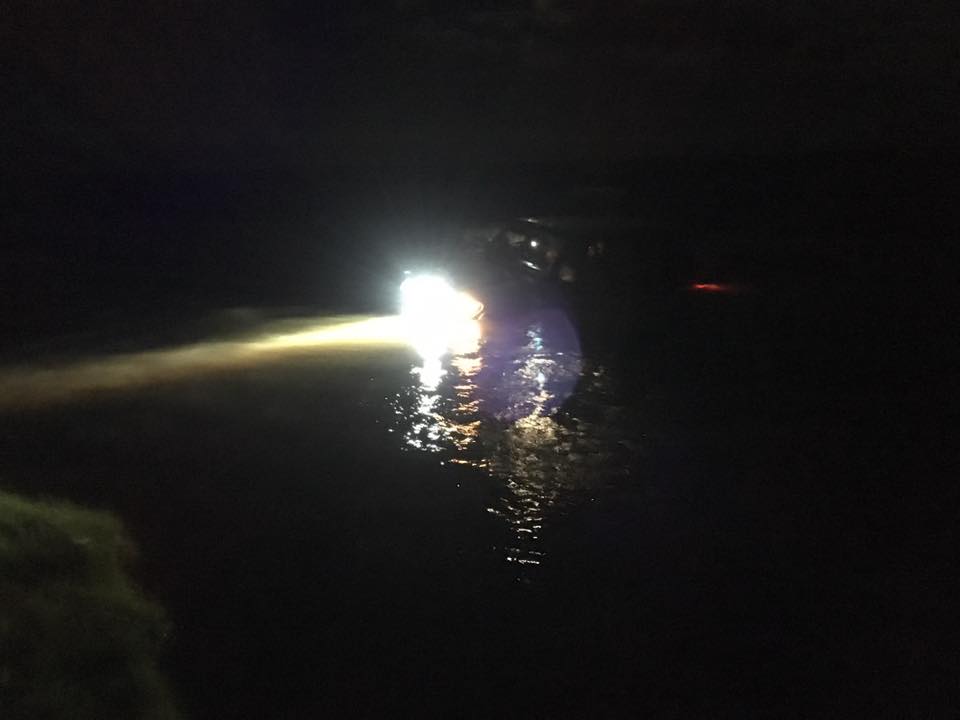
The northern part of Gobi is not the kind of desert that we got used to seeing in the pictures, where caravans of camels walk along orange dunes under the scorching sun. It differs a lot. Here it looks more like a steppe with little vegetation and a fairly hard, smooth rocky-sandy terrain. There are many roads leading from Arvarhair to Saykhin Ovo village, but they all go in the same direction, intersect with each other and disappear somewhere in the desert, then return… We kept going along a mainly hard ground, fine gravel, sand. Sometimes on our way there were areas with puddles and mud, on one of which, when exiting the turn, I fell down. Fortunately, the speed was not that high. What's more, the washouts of rain streams were common on our way and they were quite deep! Once I flew into such a pit, more than 1 m wide, since I spotted it too late. I was lucky because I managed to open the gas at the very last moment, otherwise it would have been much more trouble. :( It's quite dangerous to ride across the desert at night time but really interesting! The desert comes alive at night! The light of our headlights occasionally snatched out of the darkness a fluttering bird, a gopher or a jerboa running across the road. There were also a lot of hares. Unfortunately, one jumped right under my motorbike front wheel. At first, we thought of taking it with us, but no one wanted to deal with it, so we had to leave it to die on the roadside. :( By 1 a.m. we had driven up to the Ongi Ol river along the road, which had been leading us through a ford. On the opposite shore there was the village of Saykhin Ovo, and 15 km away from it we expected to see the yurts, in which we had planned to stay. But it seems like fate was against it. Our car started to cross the ford and in the middle of the river fell into a deep hole with the front wheel. The strong current of the river began to flood the cabin so the water rose to the level of the hood. Our attempts to rescue our Toyota ourselves didn't make any success. Therefore, I had to go to the village and look for a car at 2 a.m.
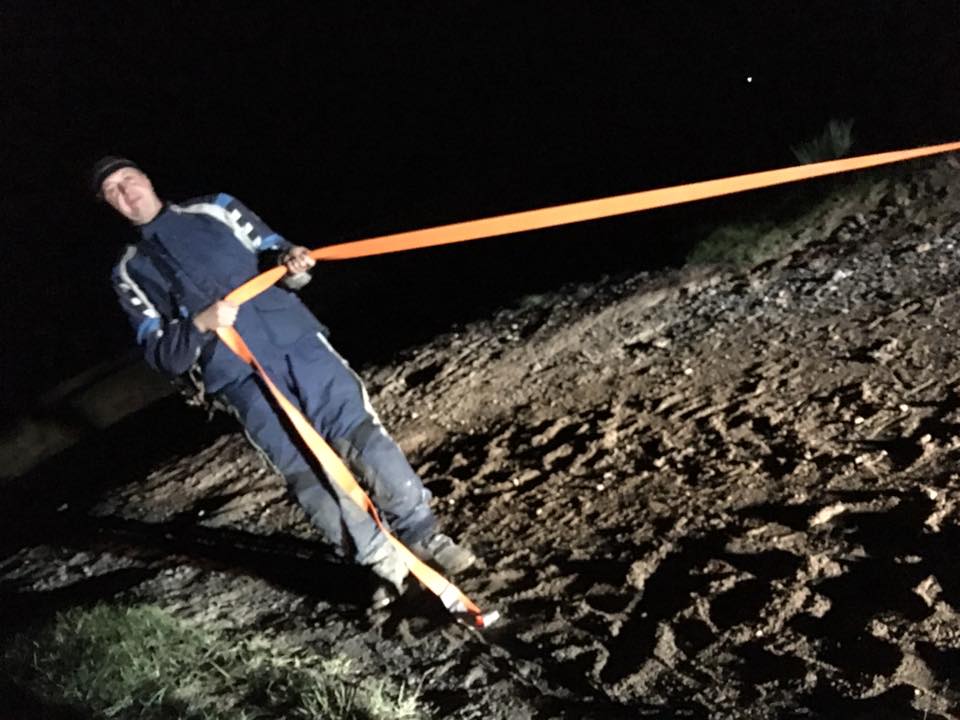
Mongols are always ready to help, even at 2 a.m.! When they managed to pull our jeep out of the water and opened the doors, streams of water poured out of the cabin together with the food, stuff and clothes. The rescue was finished at 4 a.m. Since we were not invited to the yurt, we had to set up the tents by the river (which later turned out to be a wonderful place!)
We woke up at 9 a.m. as the sun got hotter. We washed our faces and took “a bath” in the river together with a herd of sheep and goats who came here to drink.

While the breakfast was being cooked and potatoes were being fried, we found out that the gearbox and transaxle were flooded with water. It took us about six hours to find the oil in the nearest village and replace it.
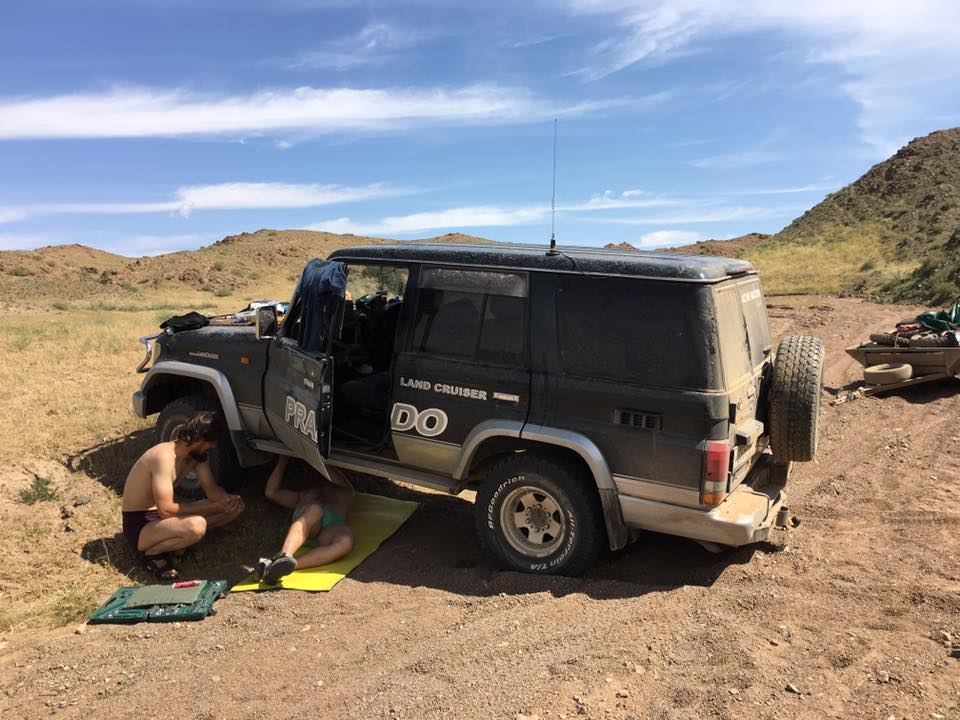
While the guys were doing repairs, Dima and I went to see the ruins of an ancient Buddhist monastery located not far from the mountain. This is a very interesting place, and the energy you feel in it is just amazing!
We left the village at about 6 p.m. The further way was going to be through the desert. We headed south. Having driven about 50 km, we saw a huge herd of camels. We were riding nearby, taking pictures, and a couple of hours later we arrived in a small, sand-covered village called Mondal Ovo.

Here we had to make a very difficult decision. The thing is that Oleg had been feeling unwell for a long time of our trip as he had stomachache since the very first day. The pain kept intensifying, turning into spasms. He had eaten practically nothing for these five days except for the pills, but nothing helped. That morning he started feeling really bad and we made a conclusion to send him home, in order to avoid risks. We loaded all the stuff from the car onto motorbikes and at night the guys took Oleg to Ulaanbaatar, while Dima and I stayed overnight in a yurt.
A young, pretty Mongolian woman (who later turned out to have five little children) brought us a plate of goat cheese (quite a disgusting food) and some lamb soup.

It was the sixth day of our trip and I met the morning already without my friend Oleg. We will proceed our way together with Dima only. He goes by Oleg's motorbike and I'm on my green BMW, which is now overloaded with stuff. Dima promised me today to be the most interesting day of our journey. And he was right!!! Today Gobi has revealed itself to us in all its diversity and beauty! And the roads changed from dusty gravel into stony sand ones.
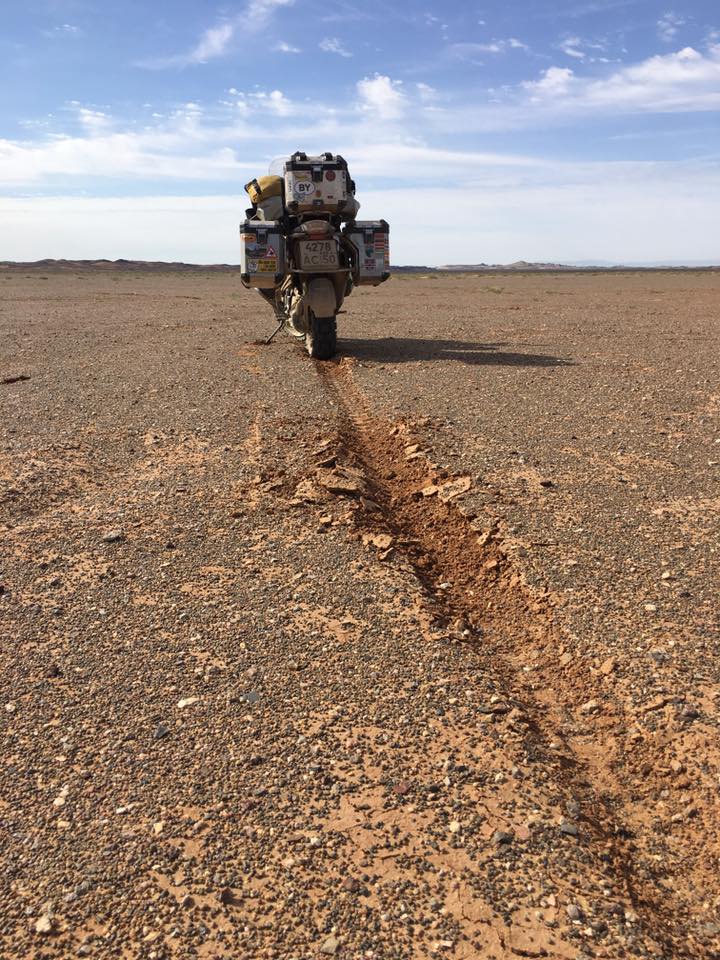
It was boiling hot. The temperature has exceeded the point of +30°C, despite the fact that we were walking at an altitude of 1500-2000 m above sea level. The landscape has changed and turned into desert area.
As for vegetation, there were only small bushes and saxaul. And there was sand of all colours: orange, yellow, red… The soil looked like a walnut shell in crack. Sometimes we came across the gnawed skeletons of horses and other animals.
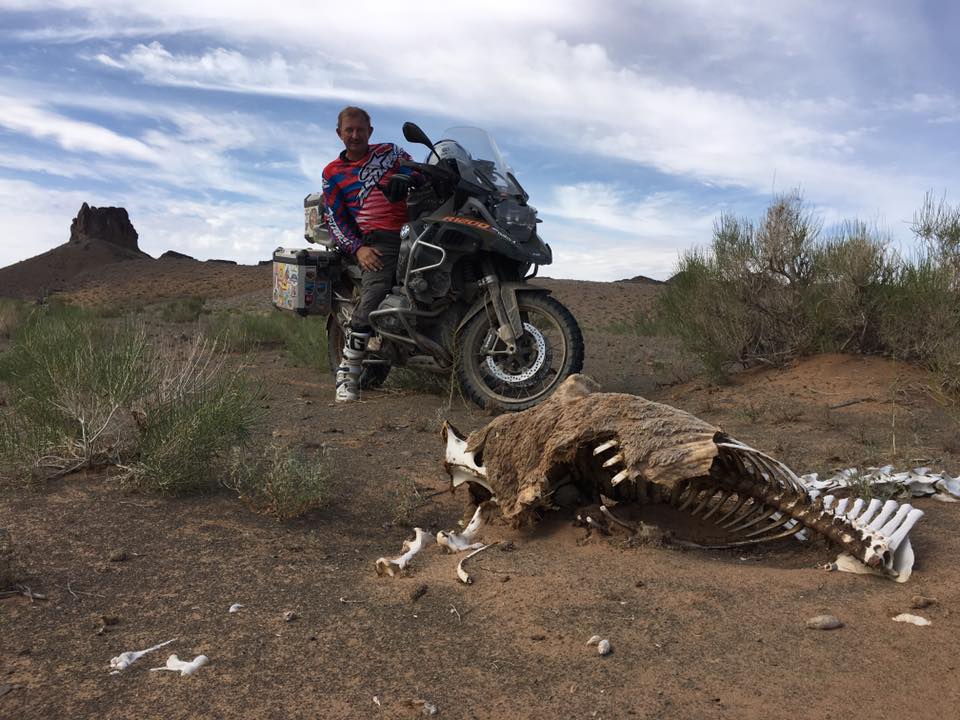
As it was so hot, we were constantly thirsty. On our way we found a well that was covered with a wooden lid, to which a long stick was tied with a rope. At the end of the stick there was a kind of rubber bucket made from a truck camera. Next to the well we saw the wooden gutters into which water was likely to be poured. This was a watering place for camels and other animals.

I drew some water from the well and poured it onto my head. It felt so good! The water was clean and cold. And we encountered such wells more than once on our way.

While winding across the plain for a long time, we arrived at the famous place called Bayanzag, which is known as the "Valley of Dinosaurs".
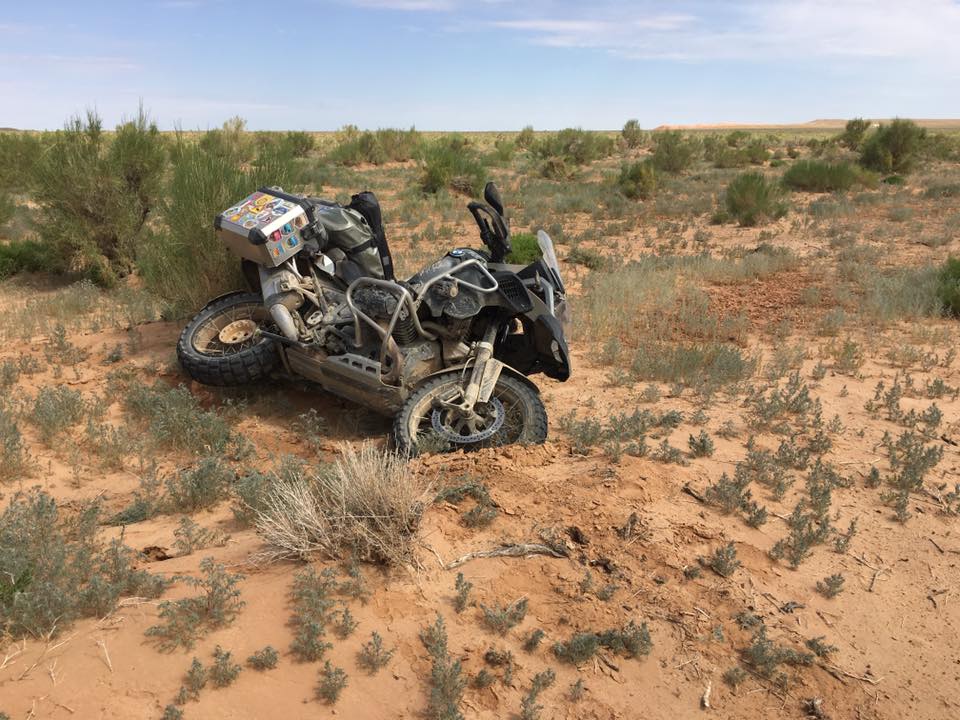
A huge number of skeletons and bones of these prehistoric creatures, which now you can find in museums around the whole world, have been unearthed here. I have found a bone too, though a very small one. It must have belonged to some kind of microdinosaurus.
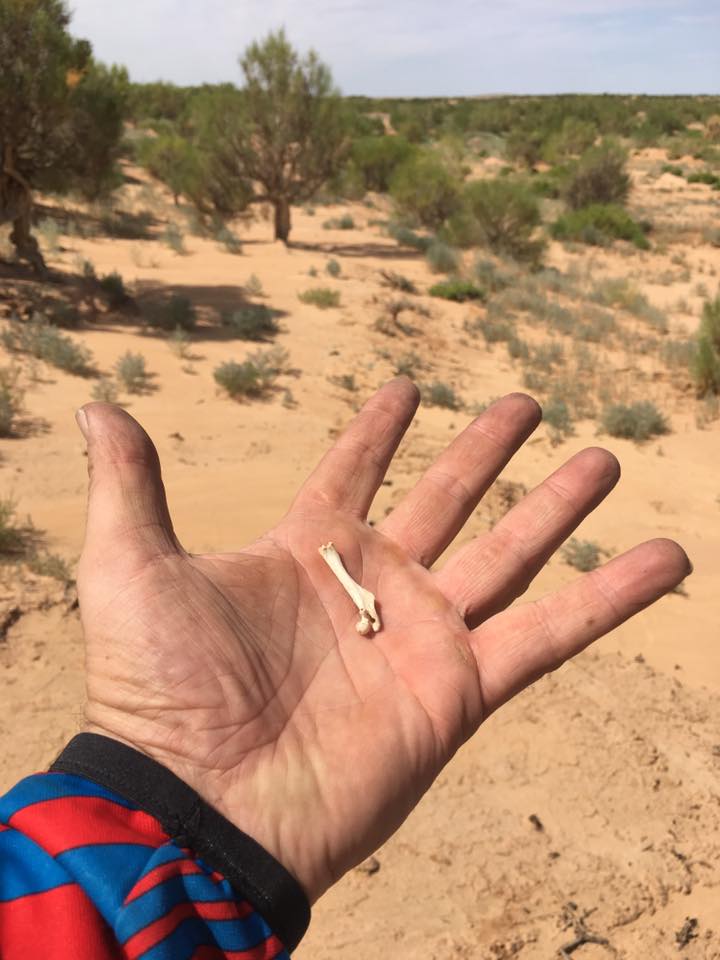
The place itself appeared to be a huge sandy canyon of amazing beauty. Such a fantastic sight! The vertical walls and pillars of bright orange sand amazed us with their "alien" origin! It seemed like we were on another planet!
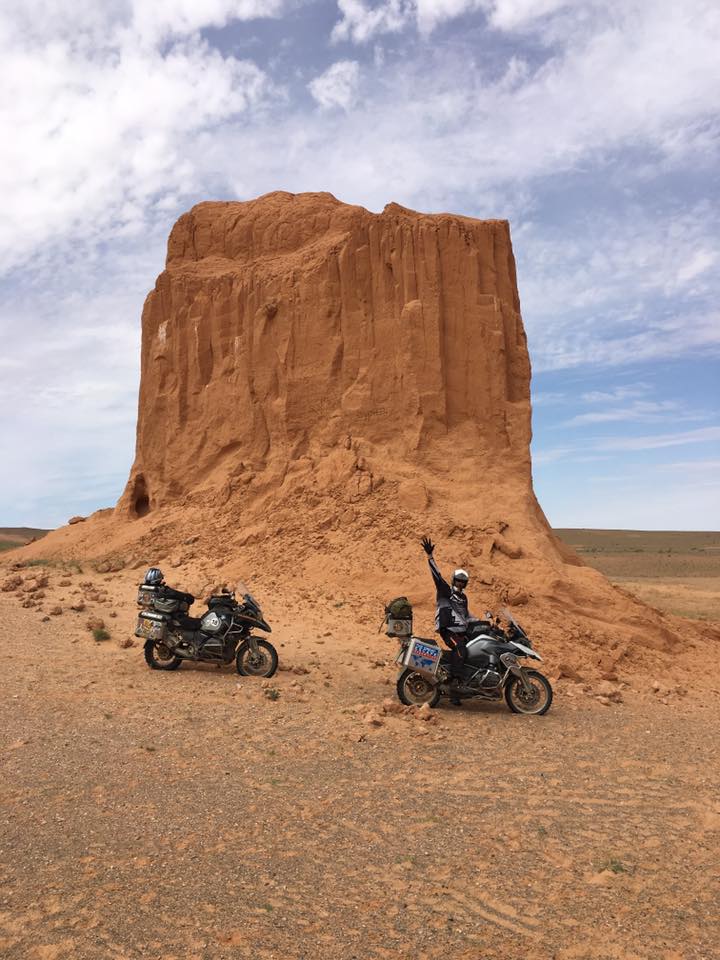
By lunch we had arrived in a small village, which name was Bulgan. Here we found a yurt, where we were able to have lunch. After that the fatigue because of the heat and the difficult path made me fall on the carpet in the very same yurt and sleep like a log for like twenty minutes or more.

We're going further. Occasionally we meet lonely yurts of nomads and herds of camels and sheep Soon a mountain range appears in front of us. It actually can be gone around, but it would be very far away. So we go through the mountains along the gorge.

Its length is not more than 10 km, but I got the impression that this road leads somewhere to the underworld! Stones, stones, stones.... and the fine gravel in which the motorbikes burrow like in sand.
Here we overcome deep washouts, sharp turns and pits... Several times my motorbike fell, hitting a stone or merging into gravel. I was strained up to sweat. But seeing the beauty around us was worth it! At the end of the gorge we luckily came across another well. Water was needed more than ever, since we were running of its supply.

What is interesting is that animal watering troughs are made of truck tires cut across, stretched and secured with goat horns. All because there is lack of wood in the desert…
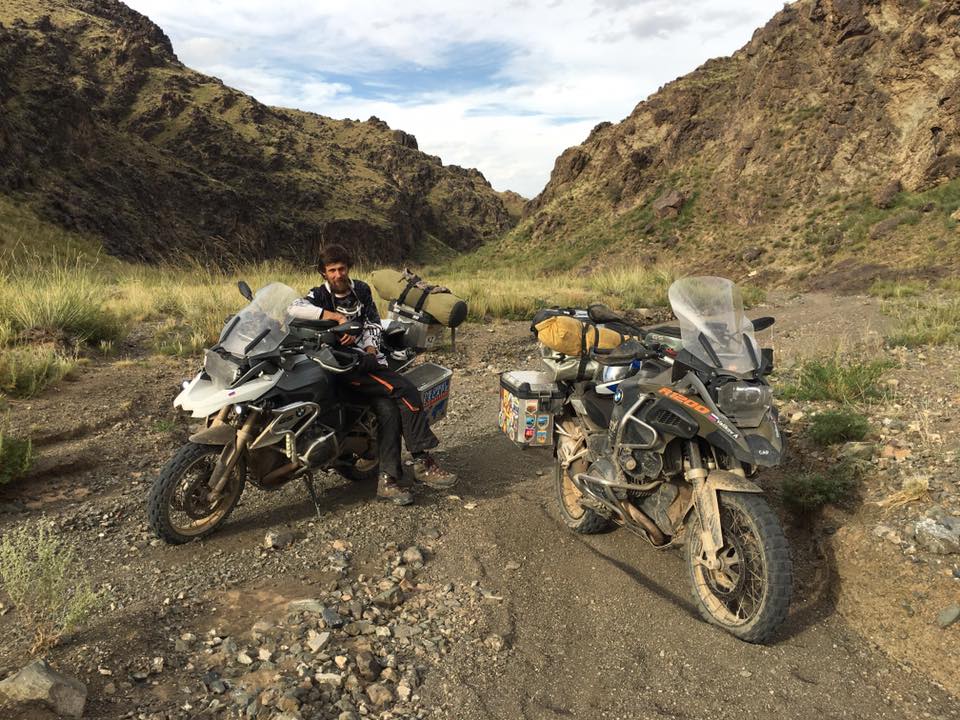
The sun has already approached the horizon, so it is going to get dark in half an hour. Today we have overcome about 200 km. It's time to find a place to stay overnight. But it's not an easy task because a strong wind is blowing in every direction, therefore it will be quite difficult to put up a tent.
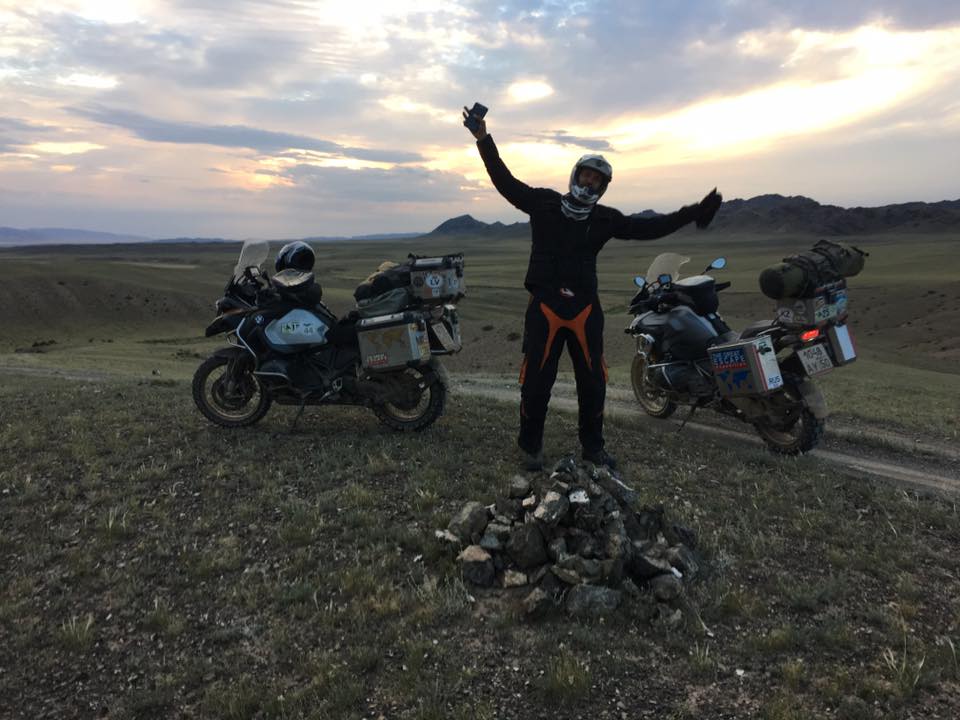
Finally, we have decided on a place and set up our temporary house, having tied it to our motorbikes. Dima has managed to prepare on a gas burner some good soup from a piece of lamb, which we bought in the morning in Mandal Ovo.
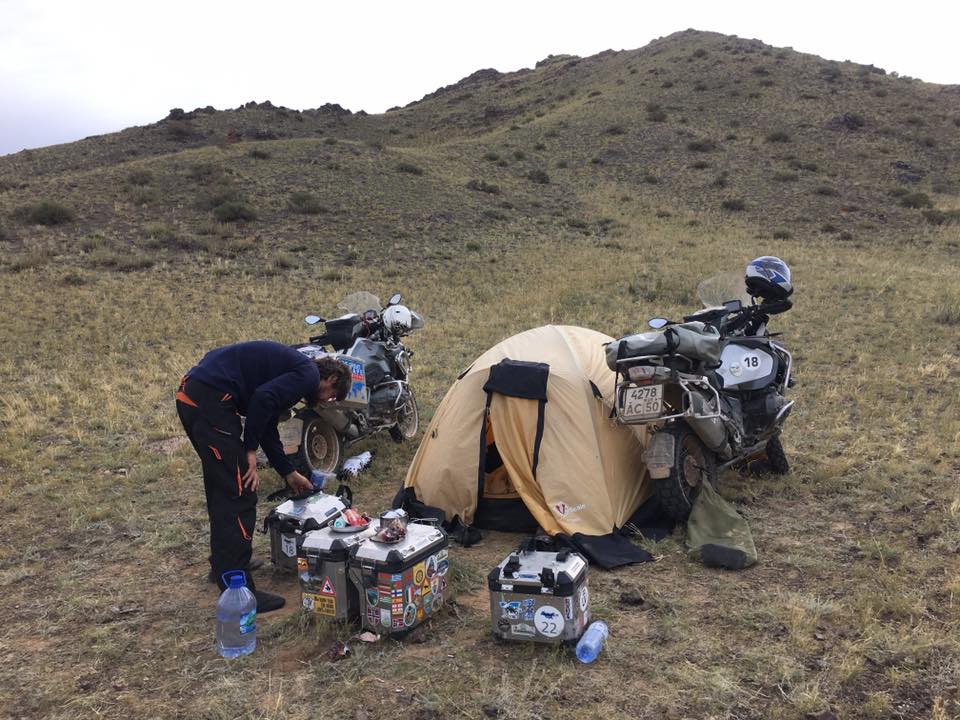
The ingredients are simple: water, meat, pasta and salt. But what a delicious soup it has turned out to be!
So a couple more hours flew by unnoticed, while we were having such a fine dinner and talking by the campfire under the starry sky.
Mongolia. Day 8
Today our main goal is Hongoryn Els — the sand dunes. This is a real zest of Gobi and probably the most interesting place in it. The huge sand hills up to 300 m high stretched between the mountain range and the plain for a distance of 80 km!
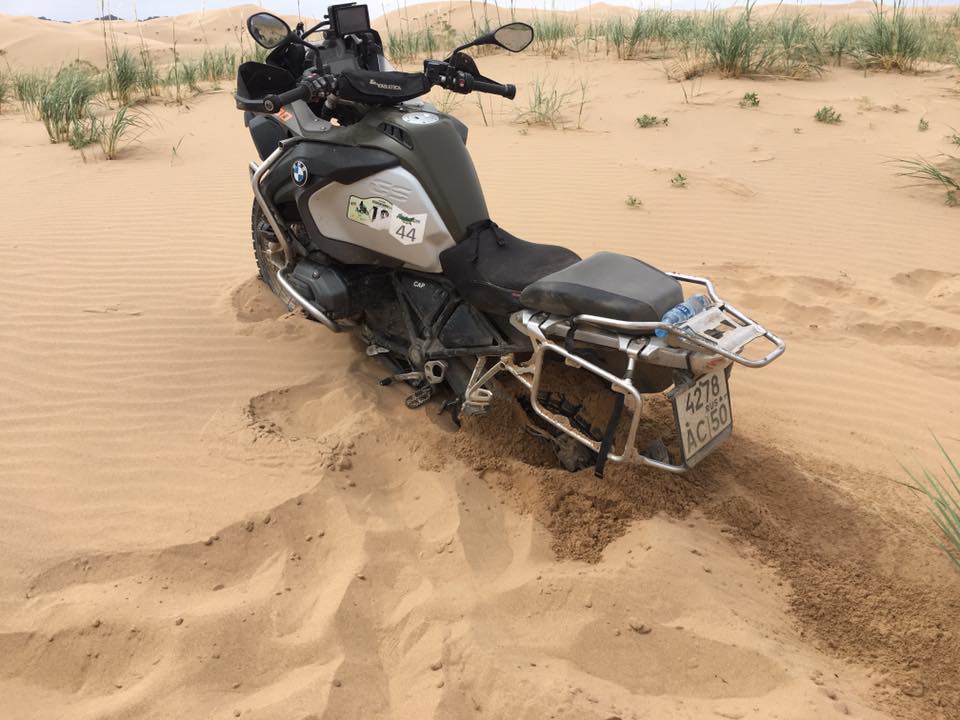
This is the desert that we imagined! This one is as good as Sahara, and someway the former even surpasses it! Dima came up with a crazy idea to climb to the top of one huge sand dune.
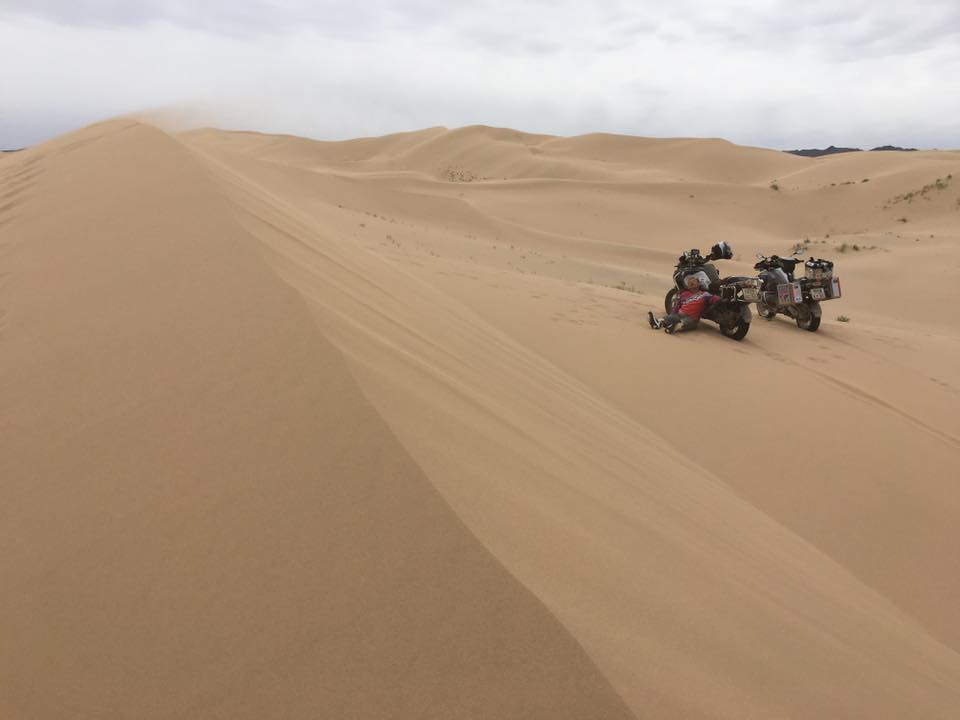
He had been here before and had tried out such a trick. However, he had done it riding his 100-kg WR 450 motorbike and I'm on a heavy BMW that weighs three times as much, so it just doesn't seem real! The sand is as dry and loose as sugar, and in some places feels like flour. Even getting to the foot of the dunes is quite difficult. Motorbikes burrow into the sand and fall… We lowered the tire pressure to 1.2-1.4 atm, trying them out again and again and choosing a trajectory from the windward side, where the sand is a bit denser. We took the second gear and went at full throttle, shifting back as much as possible and then... flew over the surface as if by boat!
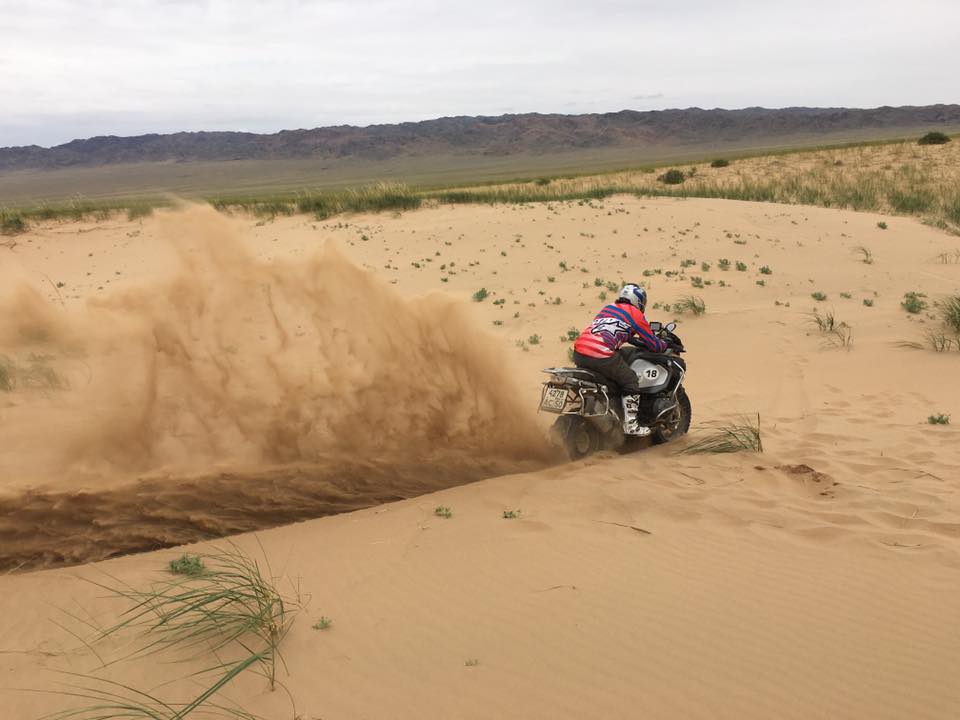
I don't know how we did it, but after a couple of hours we flew up the ridge of one of the highest dunes and stood still at the top! That time sand was everywhere: in my mouth, in my eyes, in my ears, in my underpants... I was almost out of powers, but we did it, damn it!
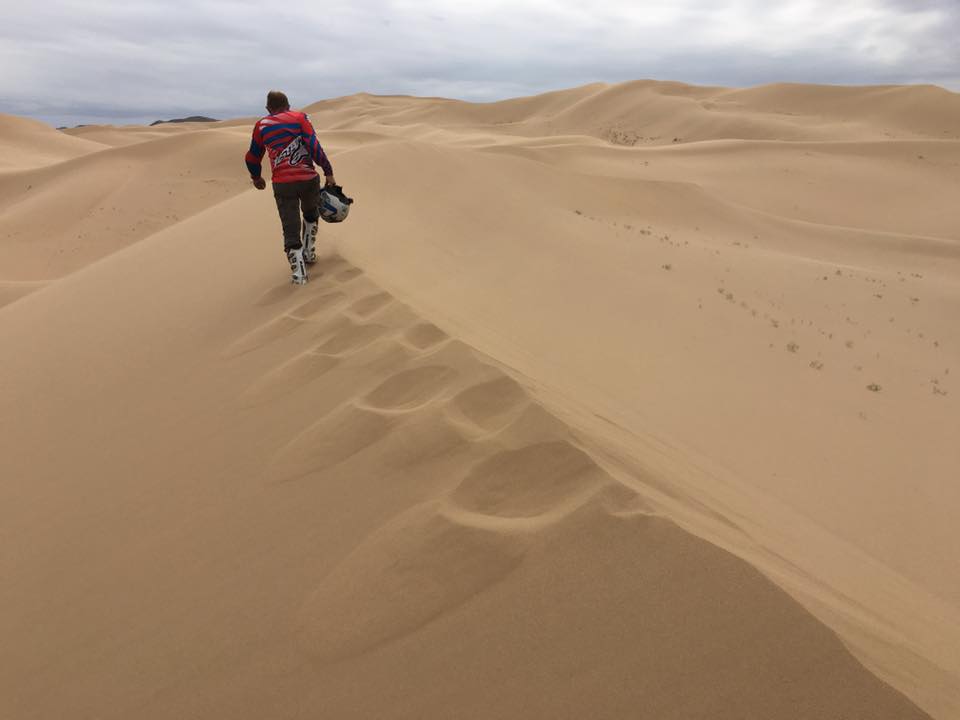
For our madness we were awarded with breathtaking views of endless sandy peaks, which the top of the dune offered. So we had the chance to take amazing pictures! That was cool!
One more interesting place that we managed to explore that day was a canyon, along the bottom of which a 10-cm-deep-river flowed! As it was like dense wet sand surface, we could race along it almost like along an asphalt road, spraying the drops around!

Today our mileage appeared to be less than 100 km but it was just a fantastic route!
Mongolia. Day 8
Our morning in the desert began with rain. It woke us up by pounding heavy drops onto the roof of the yurt, in which we had stayed overnight the day before. It might be a surprise, but sometimes it happens to rain in the desert. It put dust down to the ground, refreshed the air and soil and was over in 10 minutes.
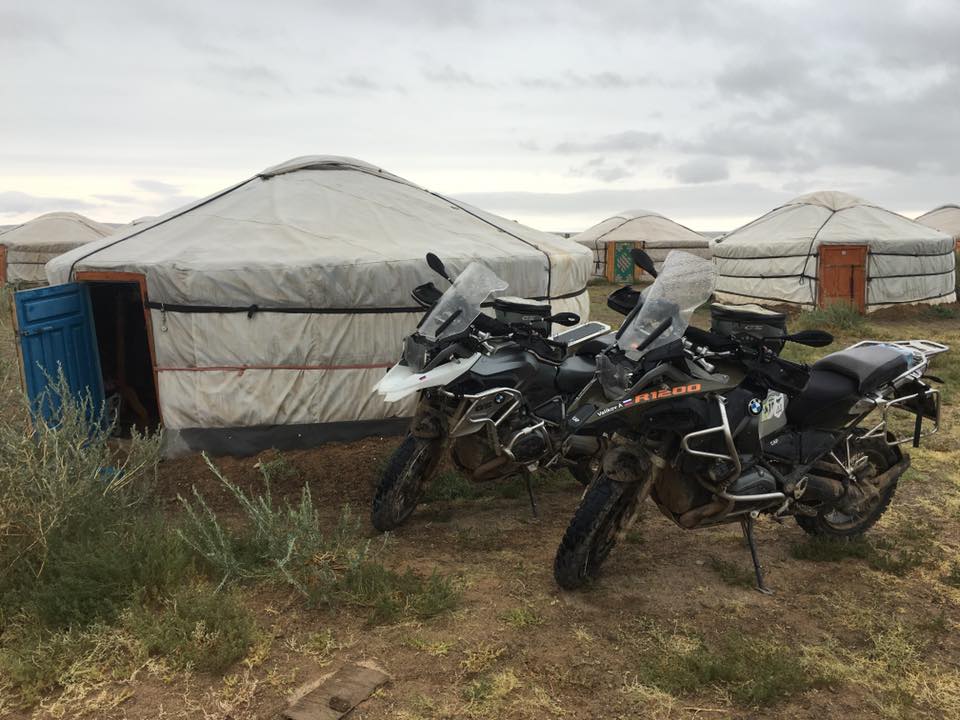
Today we have to pass a difficult long way. We are heading for Bayankhongor. But first we have to cross the dunes through their deep sand by overloaded motorbikes. And when a motorbike falls, which happens quite often, it is very difficult to lift it on your own with all the trunks, tents and bags.
In order not to overstrain you need to take off all this stuff, lift the mot and fasten the luggage back. And you repeat it every time. If doing that together, it becomes easier and takes less time, of course.
At 1 p.m. we arrived in Savray village. Here we had a snack and refueled the motorbikes. The road was difficult, we managed to pass only 30 km. From Savray to Bayankhongor there were more than 300 km, as the crow flies. There was no path; at least, the navigator did not track any. When we asked the locals how to get to the town, they would shrug and point somewhere to the northwest. To overcome such a distance in the desert without knowing the path (but only the direction) was quite an adventurous idea! Well, that's exactly what we were going for here!
Having left the town, we spotted several car tracks, which must have indicated the right direction. However, after walking along them for several kilometers, we understood that not everything was that simple. The rocky ground, along which you can go at a good pace, occasionally changes into deep loose sandy surface. Here we experienced the falls again, having buried into the sand... Let alone speed! We kept crawling at first or second gear.
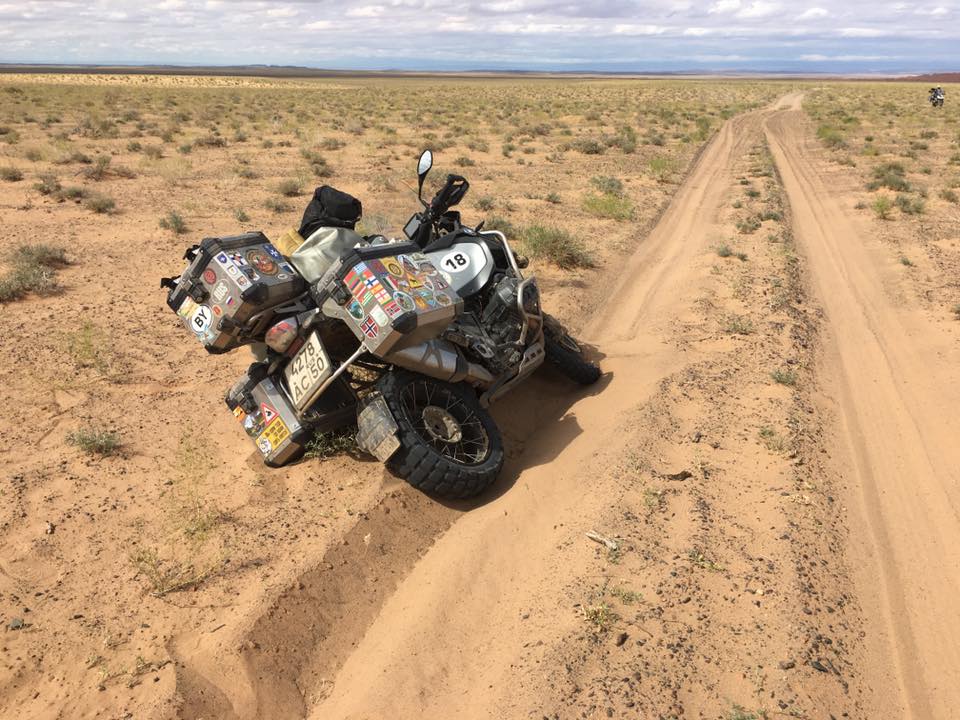
On the right there stretched a ridge of sand dunes, whereas on the left — a mountain range. The sand-covered tracks became barely noticeable, they appeared and disappeared. We went closer to the mountains, where the ground was firmer so we could take the third gear sometimes. But the problem about this path was in stones, sharp as razor blades.
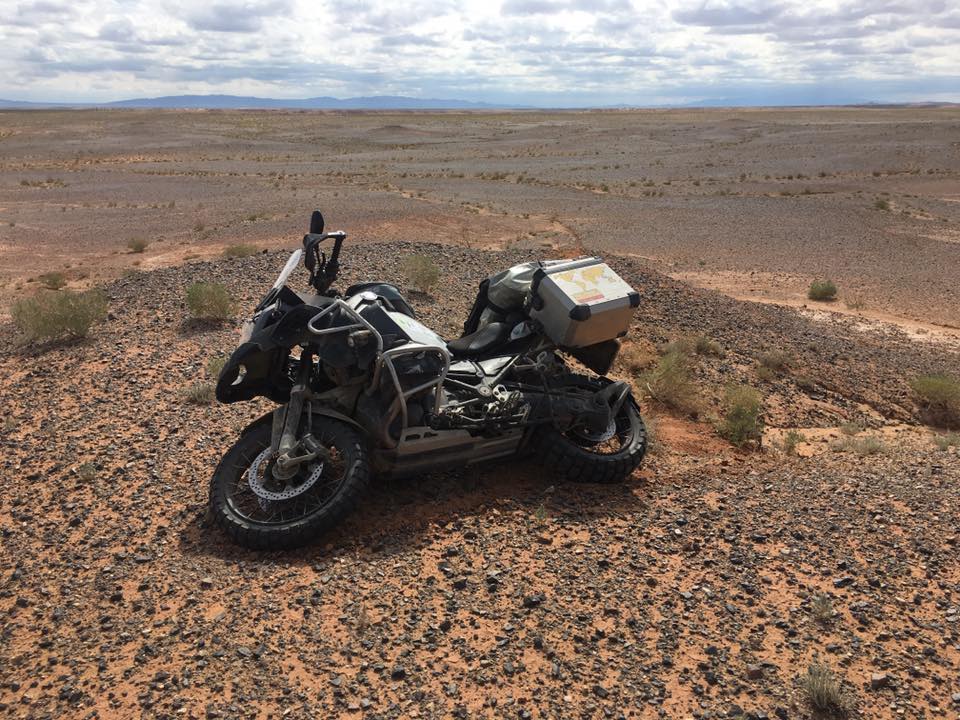
One of them punctured the tire of the motorbike front wheel. We repaired this small hole with a help of a harness.
After this incident we had rode no more than 10 km, when I looked at the dashboard and saw that the pressure in the rear wheel dropped sharply to zero. "Damn, this is bad!" — the thought came in a flash. It turned out to be a damage about two cm wide. We made an attempt to mend the hole with harnesses, but didn't make any succeess, no matter how hard we tried to attach them. The only solution was to disassemble the wheel and apply a patch from the inside. All the repairs under the scorching sun took us more than an hour.

We went further. Suddenly we have noticed a bright orange valley on the horizon to the right. In the middle of it there rose hills of bizarre shape.
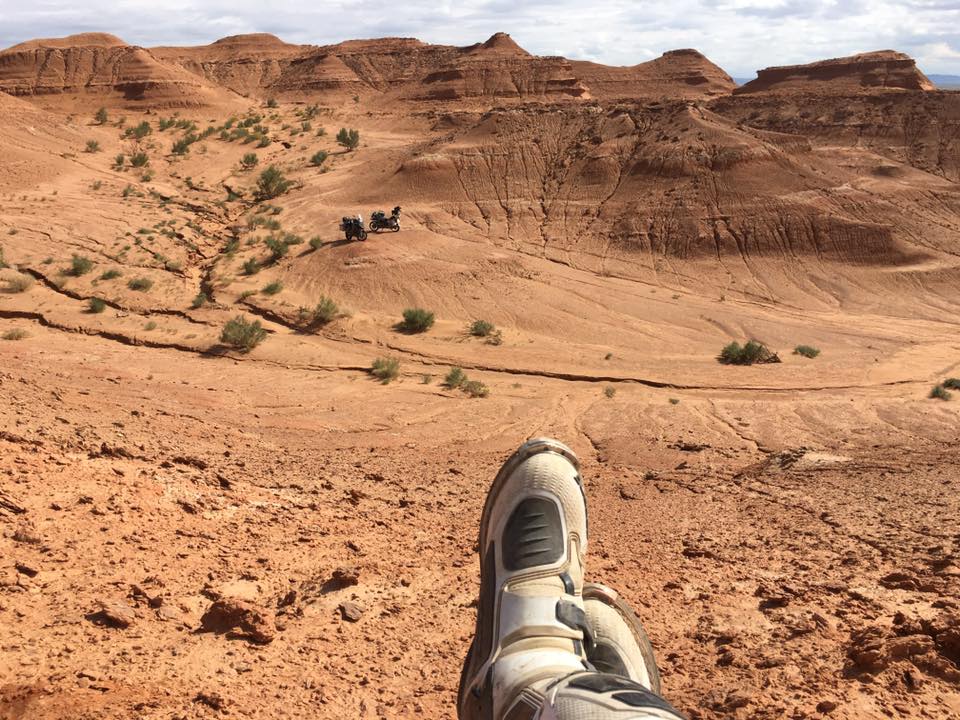
We took a turn there and soon found ourselves... on the Mars! We went along the cracked surface, saw the mushroom-shaped rocks of clay and sand and explored all this lifeless futuristic landscape! Fantastic!!!
But the sun had already touched the peaks of the mountains and we hadn't traveled even half of the way yet! There were no more tracks visible so we were going across the virgin land and soon realized that we proceeded in a different direction…
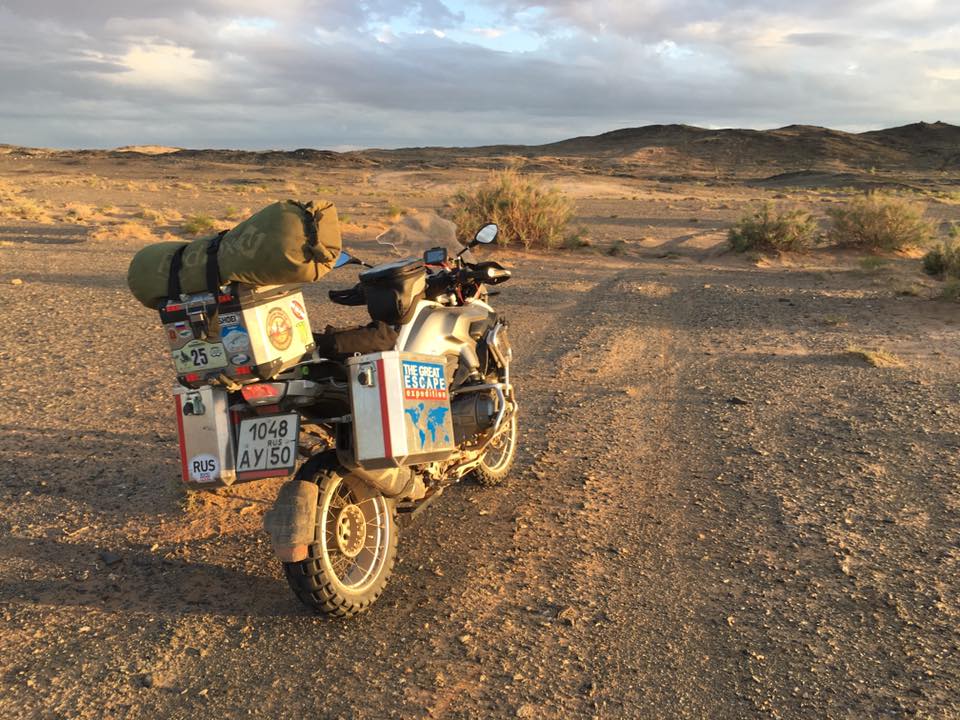
Night caught us in a rocky valley. There was no point in going further so we needed to stay overnight. It was good that we had the supply of water and even food with us, so we set up a tent, boiled some tea and went "to bed". The following morning we'll decide what to do next.
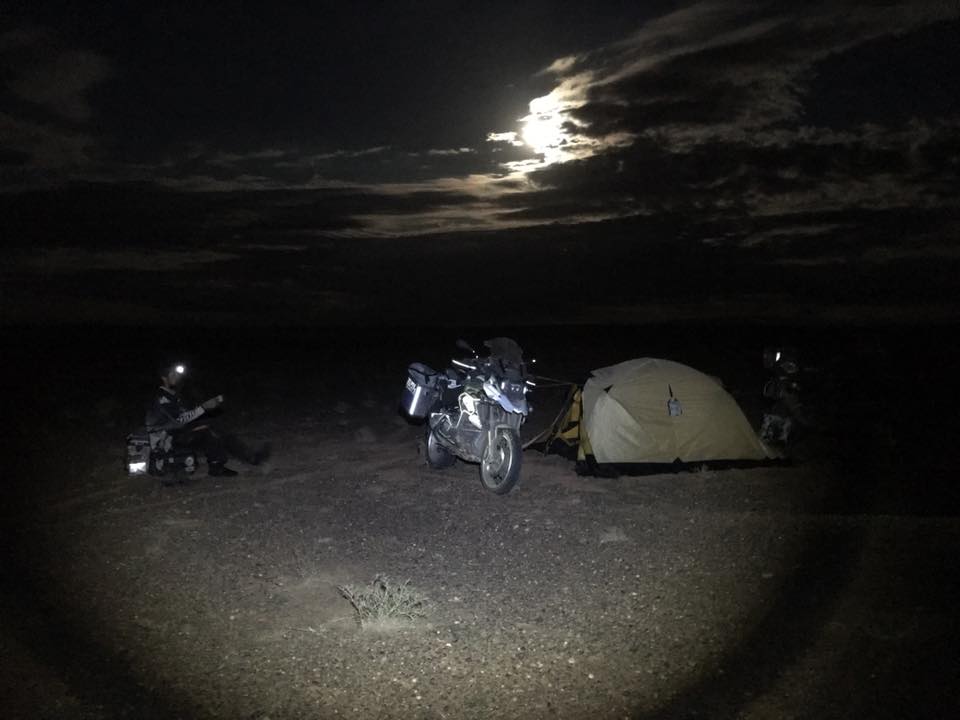
Mongolia. Day 9
It's morning. The sun has already warmed up the tent, so it's high time to get up. A cup of tea with sugar and lemon gives us energy and fills with good mood, which is just right, since we have to give our all today.

Thanks to the navigator, I have spotted an intermediate point of destination — the village named Borg, which was 120 km away. Soon we came across something like a road, which was that car track leading to the direction we needed. And again we went across sand, cracked clay, pits, stones…
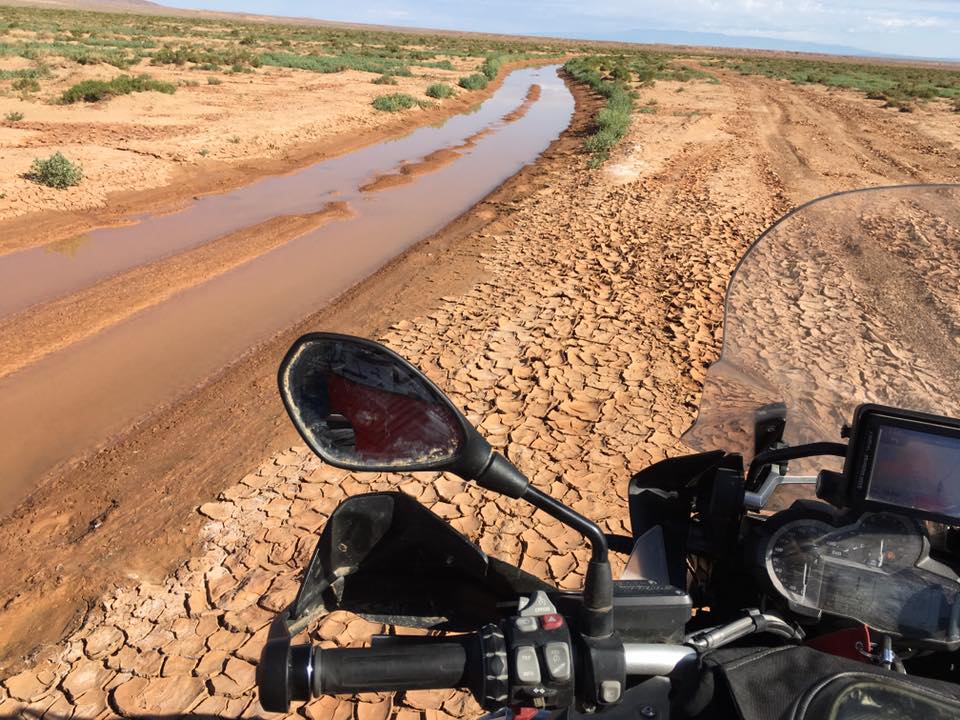
Taking the first or the second gear... is not riding, but a torment. The weather was hot. It was good that we had stocked up on water, because we were constantly thirsty. Finally we went out onto quite a rolled-up path so we could take the third gear! Having crossed the top of another hill, we saw a herd of camels. Not far there was a well and a dry gutter. They stopped nearby.
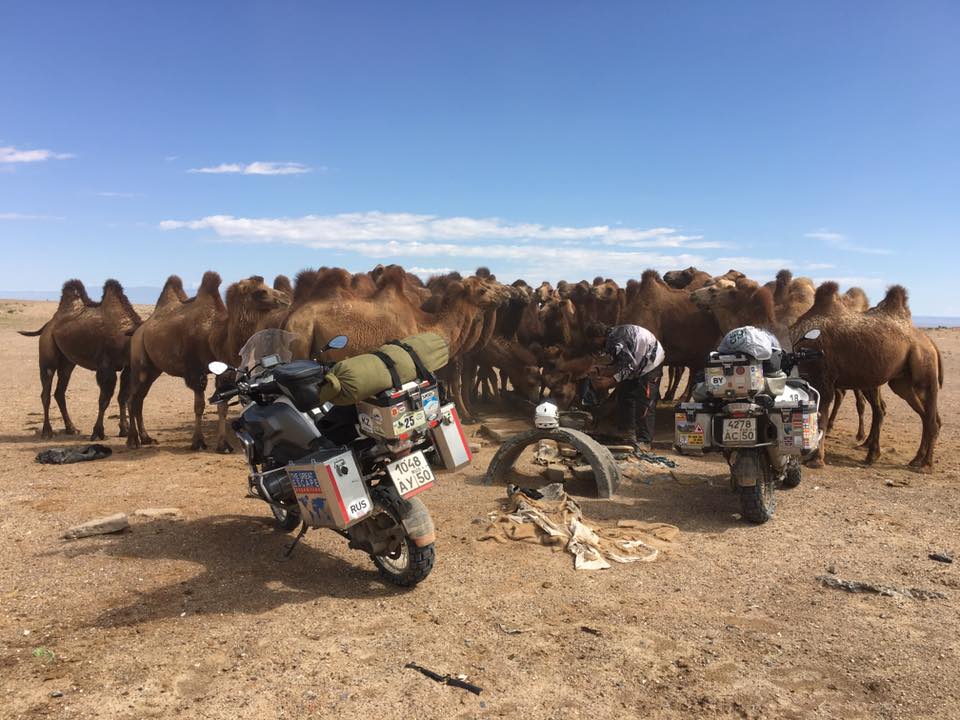
We approached the well. The camels followed us and surrounded by a tight ring. Every animal had such begging eyes!!! It was clear that they wanted to drink. We opened the rusty lid, but there was no bucket on the rope! And water was 3 m deep. While I was getting the ties, Dima found some kind of bucket from a car tire nearby. I wish you had seen how these animals drink water! As soon as water comes into the gutter, the first camel immediately draws it like a pump.
Therefore, the second camel already gets quite a bit. They push each other and roar… For ten minutes we were working as a water pump, providing the camels with water, but then we realized that this challenge was too tough. Sorry, guys, but we have to go on. We had overcome about a 100 km in four hours. And at the roadside there lied a gnawed corpse of a camel.
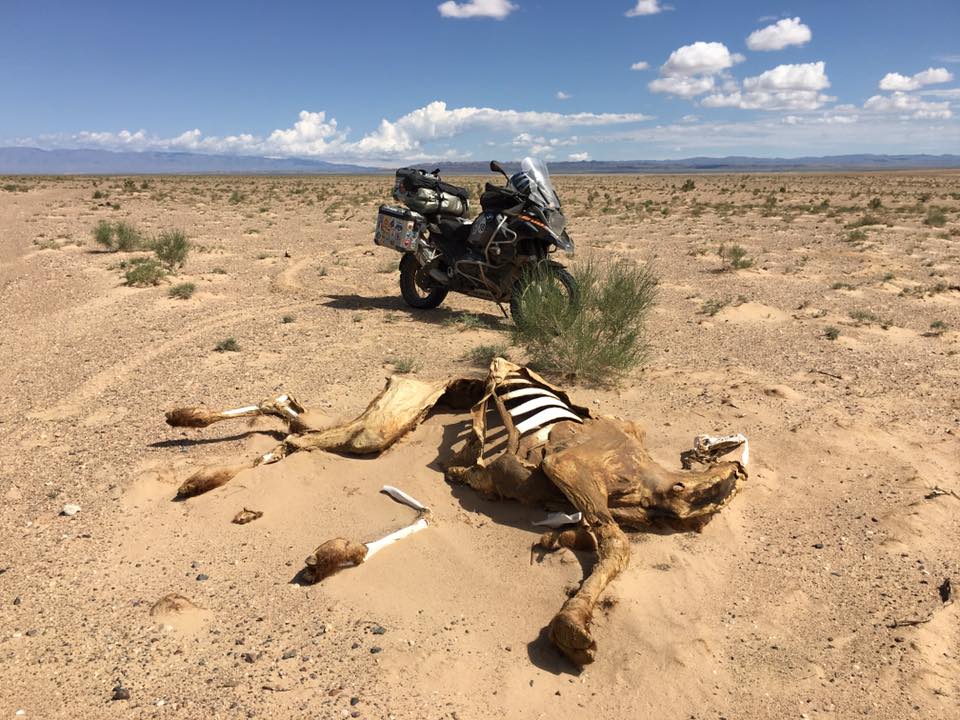
That was quite an unpleasant sight! And within all this time of our journey across the desert we haven't met a single living soul. I mean, a human.
Mongolia. Day 10
Today we decided to give ourselves a little rest. We felt exhausted because of the accumulated fatigue. I wished we had got an opportunity to wash our clothes and put our motorbikes and ourselves in order.

It would also be nice to repair the rear wheel of my motorbike, since the patch we had put that time wasn't firm enough to keep all the air inside the tire. We decided to ask a local car service for help. Mongolian car service is a unique thing! Imagine a shed littered with all sorts of pieces of iron and old tires, in which two Mongols work. Of all the tools they have only a compressor, a welding machine and a hammer.
By and large, we fixed the wheel ourselves using our own tools. And the two Mongolian service men and their two friends who drove up to the car service by the truck were watching us doing the repairs nearby. Then one of them asked me for a tool and went to twist something in his truck.
Today we also had a cultural experience. We visited a Buddhist monastery and a park with concrete dinosaurs and a non-functioning fountain overgrown with grass. Apparently, there has been nobody in this park since the Jurassic period.
The monastery was built in 1992. It looked quite simple and we haven't seen any monks there. However, one nun found the key and allowed us to come to the temple at our request. The interior turned out to be quite interesting. Besides the statue of Buddha, there were also figures of various bloodthirsty multi-armed gods and different creatures.
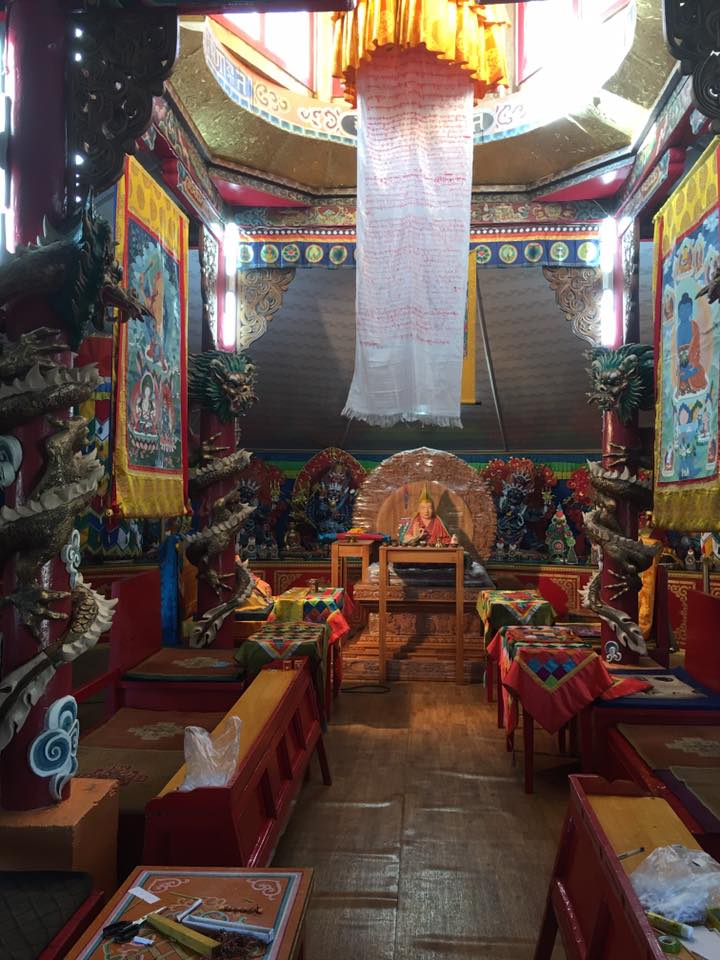
The nun gave us a short tour around the monastery in Mongolian. We kept nodding, pretending to understand something, put a few bills at the Buddha's feet and, saying goodbye, went to the car wash to make our motorbikes clean.
Bayankhongor is a pretty decent town by Mongolian standards. There are three traffic lights, a hotel with WiFi, a karaoke bar and a petrol station providing the gasoline number 95.
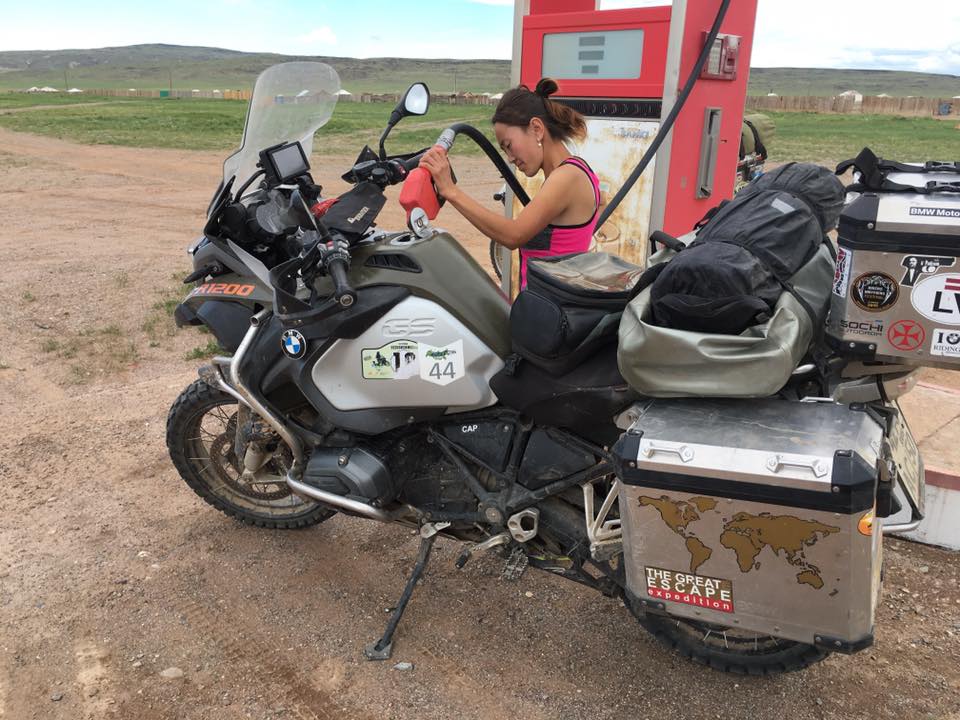
Mongolia. Day 12
Today we are going to get to the next town in the western part of Mongolia called Khovd. We will follow the federal highway that connects the Russian Altai and Ulaanbaatar.

As a rule, it is used by every traveler, who happens to be in Mongolia. The distance from the Mongolian part of Altai to Khovd is about 430 km . Nowadays an asphalt highway is being constructed on this part of the road by the Chinese workers. I think, in a year or two it will be possible to fly along it with the breeze, looking around at a rather dull landscape. By the way, some sections of the highway have already been built, and now a 150 km distance to Khovd is a gorgeous highway with minimal traffic, along which I raced at a speed of 150...160 km/hour.
I could have been even faster, but the speed potential of off-road tires and a strong crosswind limited my desires. Nevertheless, the first 200 km from the Altai are terrible! I've never seen so much dust! Somewhere it was 20 cm deep and more! It was even worse than sand! And it was very difficult to ride a motorbike, since there was practically no grip on a hard surface. If there goes an oncoming truck, a huge cloud of dust will cover everything around so that nothing could be seen at a distance of 3 m! And again I had the puncture of the rear wheel. This time I had run into a long bolt. Where could it just have come from? What a shame! – I have just installed a new tire…
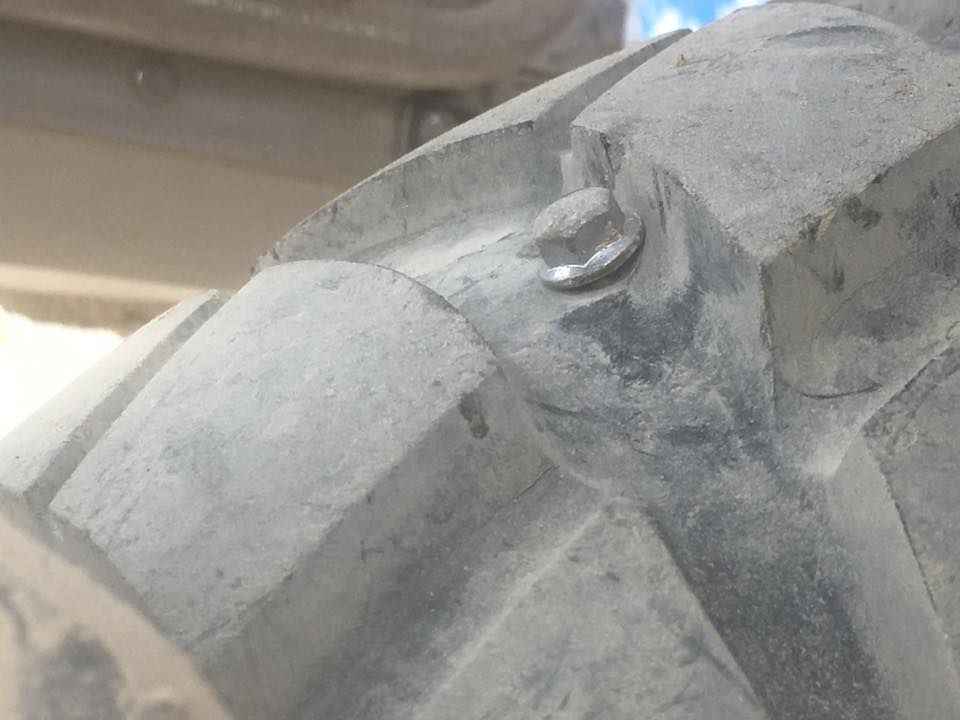
We met two motorbikers from Romania. They had gone across Russia, ridden around the Caucasus and that moment they were going to Vladivostok to take a ferry to Sakhalin island. Then they might proceed to Korea, India, Tibet… Their circumnavigation would last for a year. What unusual people we tend to meet!
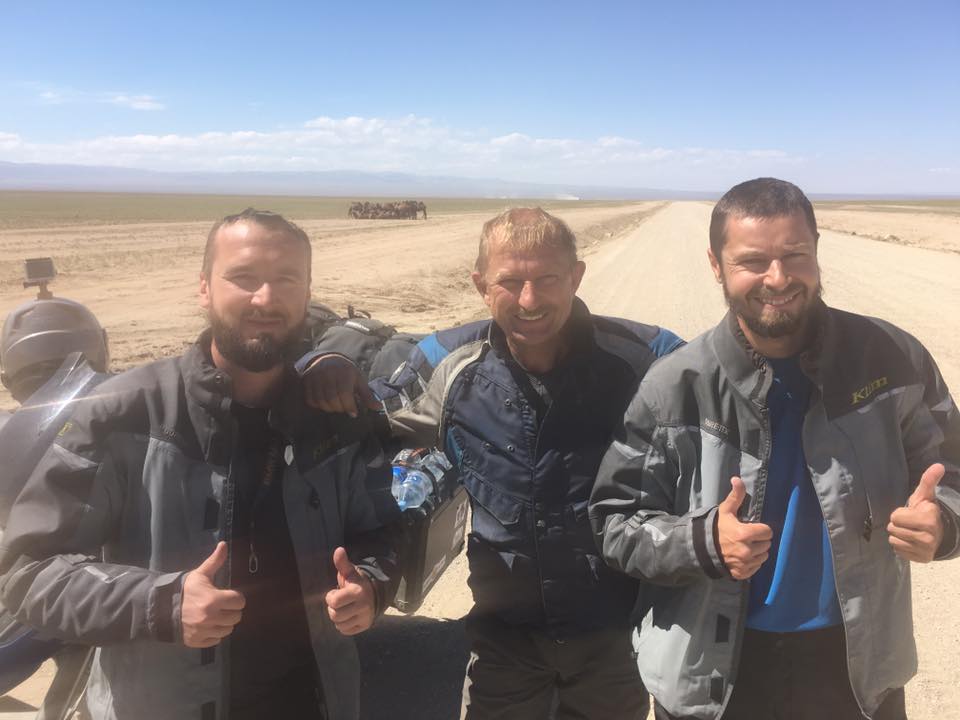
Mongolia. Day 12
From Khovd to Tashanta (the checkpoints of the Russian-Mongolian border) there are just a bit more than 300 km along a gravel road.
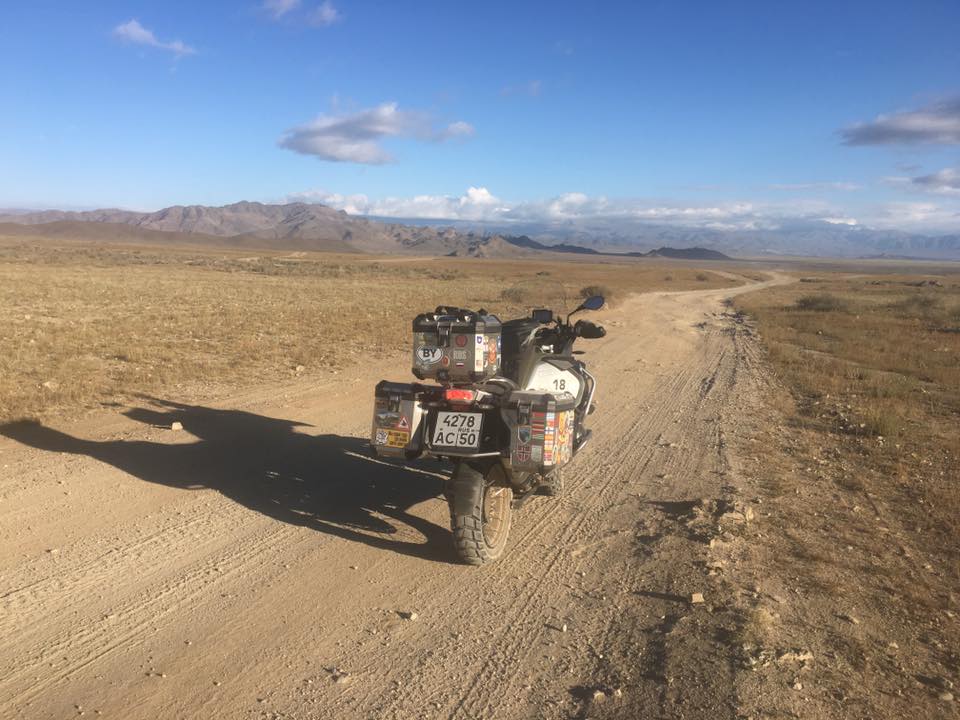
Therefore, we decided to get up early in order to reach the border before the checkpoint closes, that is, before 5 p.m. We started our way at 7 a.m. and after that I remembered that I had left my passport at the hotel, since it had been taken as a deposit upon check-in. It's good that I recalled that fact soon, otherwise I would have to return today.
The road from Khovd to Olgiy appeared to be very beautiful and quite easy. The hard rolled surface with fine rubble on it allows one to take the third, the fourth and sometimes even the 5th gear and go at a pretty high speed.
Of course, there were a few problematic places (five or six wide fords), but they have actually added some more drive to the trip. We were following the mountain serpentines and the views were just gorgeous! Unlike in the dreary steppe, which we experienced while going from Bayankhogor to Khovd, here nature comes to life!
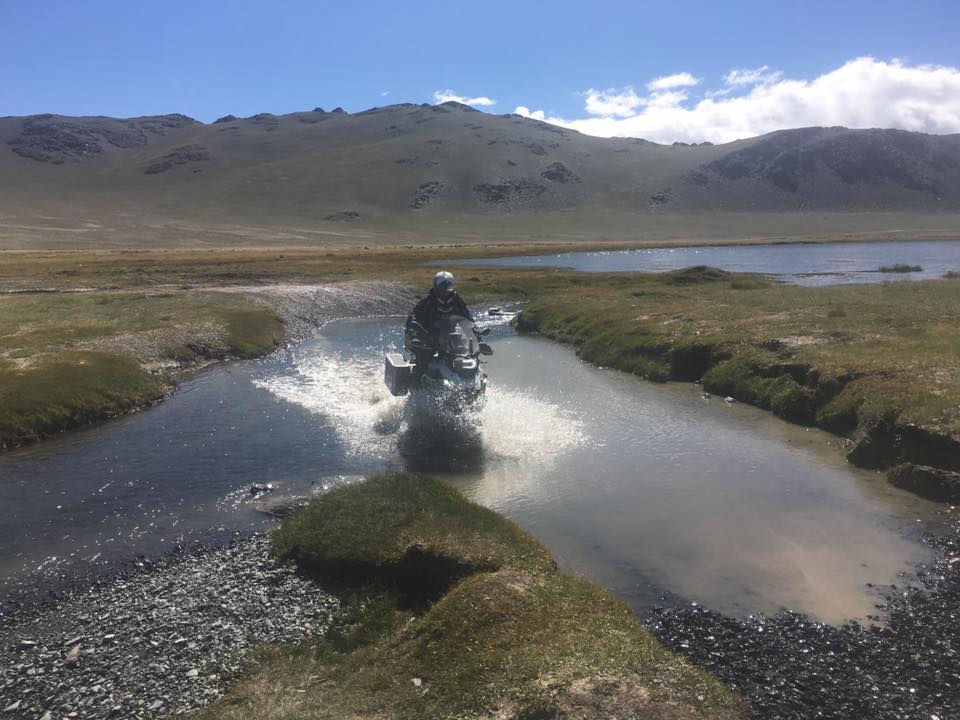
We reached the pass, where the temperature dropped to +4°C. On the right we saw the snow-capped mountains. And a lot of eagles. At the pass we made a stop in the yurt to have a snack. While the housewife was slowly preparing some soup from mutton and bouza for us, we were having a rest in comfortable soft armchairs. It was so relaxing...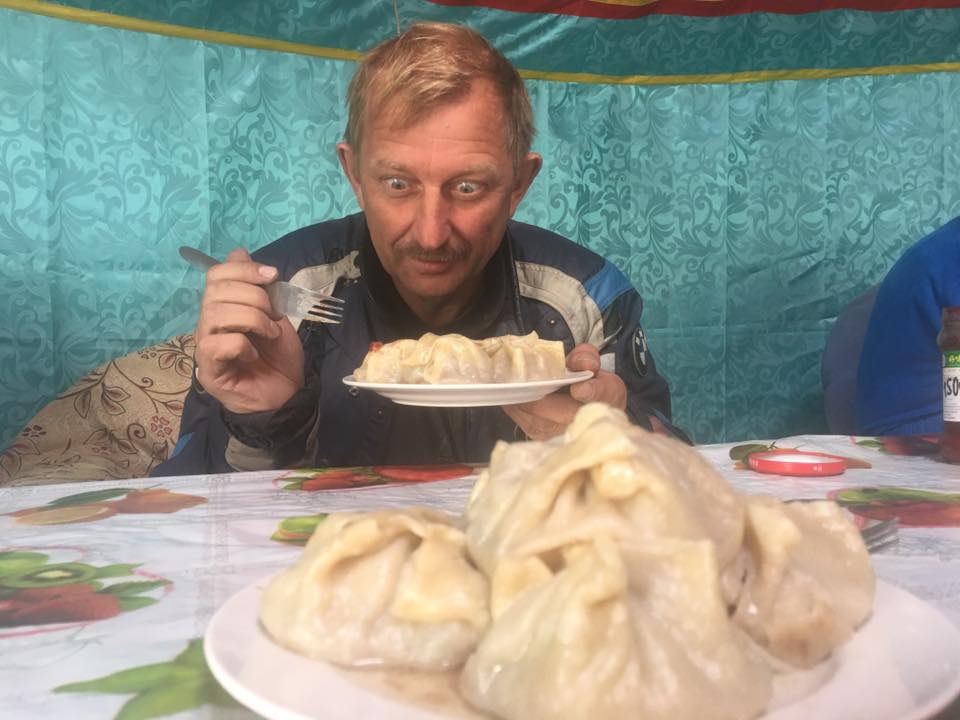
We went further and an hour later we saw a bearded man walking alone with a loaded camel. We stopped. The pilgrim turned out to be a Swede who had arrived in Mongolia two months before.
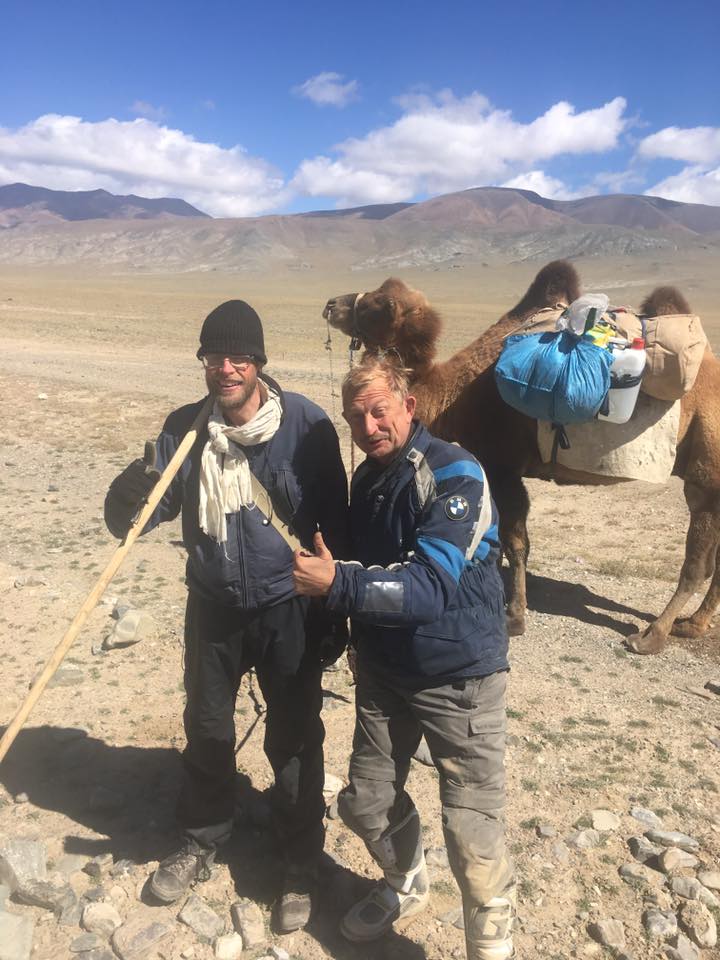
Somewhere near Ulaanbaatar he had bought a camel and together they had started their way across the country. The man said that in the nearest future he intended to go across Russia to Kazakhstan and finish his unusual journey somewhere near the Caspian Sea. He was very happy to tell us about his experience and his camel. I gave him a spoon as a souvenir, took the picture of us and we continued our way.
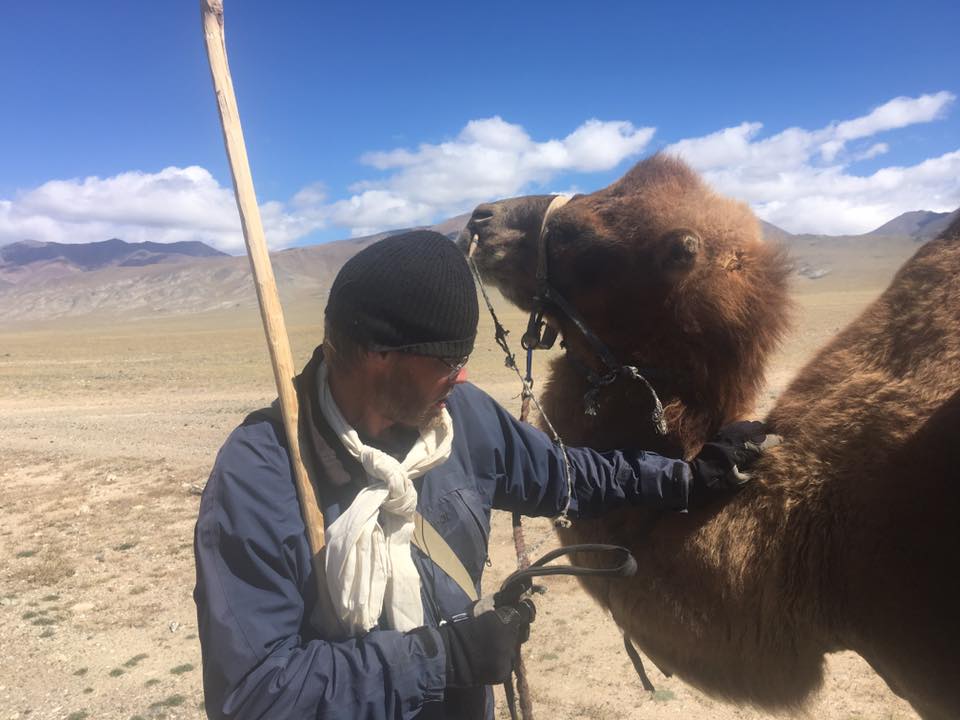
Before you come to Olgiy and up to the border there has been paved a nice asphalt road, so we managed to arrive in Tashanta on time. The procedure of crossing the border took an hour and a half, as the Mongolian officers were not in a hurry, though at the checkpoint there were only a couple of cars and about five pedestrians besides us.
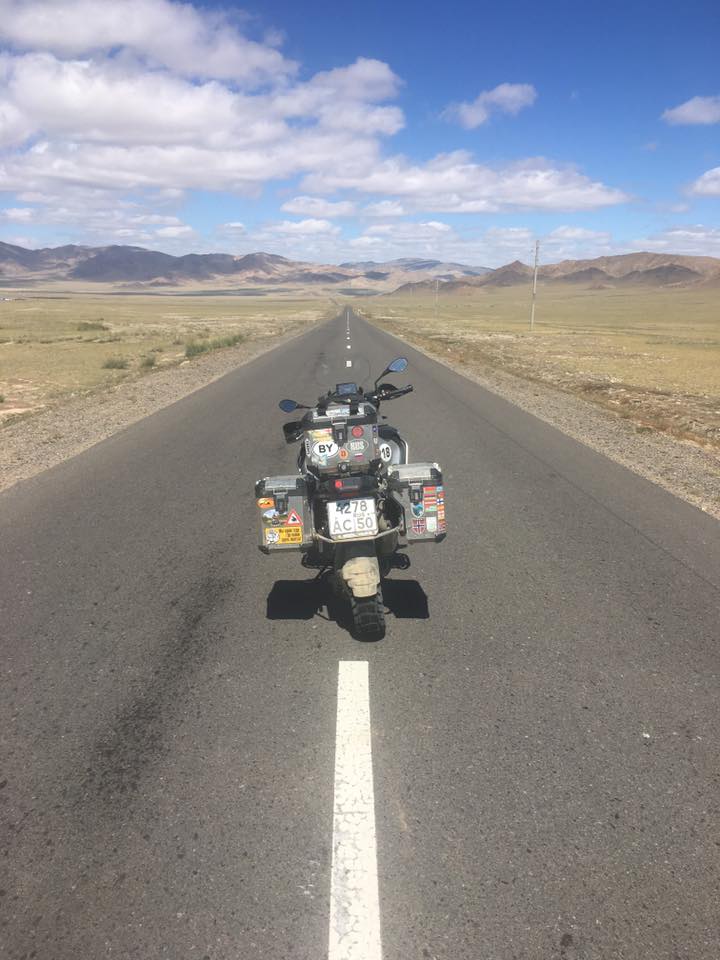
And as soon as we crossed the boarder, Oleg was ready to meet us in the territory of Russia. He was full of joy. The thing is Oleg had been delivered from Ulaanbaatar to Irkutsk, where he was recovering in the hospital while we were traveling across the deserts and steppes. And when he was alright, he managed to reach the border to continue the journey, which had been so suddenly interrupted. He is such a strong man!
We stayed overnight in a small town called Kosh-Agach, which was located 50 km from Tashanta.
This way the first part of our motorbike trip has come to an end. Now Mongolia is behind us. It was just an incredible and wonderful journey! This country has met my expectations for sure, like for 200%!
But there are two more stages ahead — the Altai and Kazakhstan. I hope they will also be quite interesting and full of the most vivid impressions!
comments powered by HyperComments
 Cap-travel.ru
Cap-travel.ru